Why NASA Needs a Programmer Fluent In 60-Year-Old Languages
To keep the Voyager 1 and 2 crafts going, NASA's new hire has to know FORTRAN and assembly languages.

UPDATE: The Voyager team has hired internally for Zottarelli's replacement, and the retirement is not anticipated until next year. "I go down the hallway and I meet people and I say, 'Wow, Voyager was the best project I've ever worked on. I wish I could get back on it again.' Those are the kind of people that I seek out when I have to replace people," Dodd said in the previous interview.
Larry Zottarelli, the last original Voyager engineer still on the project, is retiring after a long and storied history at JPL. While there are still a few hands around who worked on the original project, now the job of keeping this now-interstellar spacecraft going will fall to someone else. And that someone needs to have some very specific skills.
Yes, it's going to require coding, but it won't be in Ruby on Rails or Python. Not C or C++. Go a little further back, to the assembly languages used in early computing. Know Cobol? Can you breeze through Fortran? Remember your Algol? Those fancy new languages from the late 1950s? Then you might be the person for the job.
"It was state of the art in 1975, but that's basically 40 years old if you want to think of it that way," Suzanne Dodd, program manager for the Voyager program, said in a phone interview. "Although, some people can program an assembly language and understand the intricacy of the spacecraft, most younger people can't or really don't want to."
you have a few tasks ahead of you and about 64 kilobytes of memory to work with
As the new engineer, you have a few tasks ahead of you and about 64 kilobytes of memory to work with. The Voyager twins sport NASA's earliest on-board computers, a step away from the sequencers used on projects like ISEE-3. A sequencer uses radio or audio tones to turn on an instrument but with an onboard computer, more functions can be automatic, which is especially helpful if your spacecraft is more than 12 billion miles away—17 hours by radio—and only certain antennas work with it. Voyager 2, now moving downward from the ecliptic of the solar system, can only be reached by the Canberra antenna of the Deep Space Network.
The last true software overhaul was in 1990, after the 1989 Neptune encounter and at the beginning of the interstellar mission. "The flight software was basically completely re-written in order to have a spacecraft that could be nearly autonomous and continue sending back data to us even if we lost communication with it," Dodd said. "It has a looping routine of activities that it does automatically on board and then we augment that with sequences that we send up every three months."
Both spacecrafts are "very healthy for senior citizens" Dodd says and they have enough power left to run for another decade, though beyond that the future is uncertain. To try and prolong their lives, a new engineer would have to help figure out a way to make a sort of "energy audit" from afar, check to see the energy requirements of remaining instruments, and help institute shutdown procedures that make the most of what's left of the onboard energy.
"[The original engineers] said, 'This subsystem takes 3.2 watts of power.' Well, it really took 3 watts, but they wanted to be conservative when they built the spacecraft," Dodd says. "Now, we are at the point in the mission where we are trying to get rid of the margins and get the actual numbers."
The clock is ticking.
That's when it's time to turn back to old documents to figure out the logic behind some of the engineering decisions. Dodd says it's easy to find the engineering decisions, but harder to find the reasoning. This means combing through secondary documents and correspondence hoping to find the solution, trying to get in another engineer's head.
The last resort is picking those engineers' brains directly. Many are retired, and are working on 40-year-old memories. Still, the small team working on Voyager today has a list of engineers and others on-hand to call in emergencies. Dodd herself has worked on the spacecraft off and on since 1984, just before the Uranus flyby.
"People's memories 40 years later aren't always accurate," Dodd says. "It's good to have that data point, but you can't guarantee 100% that that was the correct rationale when somebody's trying to recall it."
The clock is ticking. It's time to find a new engineer as Zottarelli prepares to retire. There will be six months to a year of on-the-job training, but that's about it. Dodd isn't holding out hope for some up-and-coming young coder who work on the project for decades to come. She says instead its closer to walking up and down the halls of JPL, hoping to nab an experienced someone slightly younger than the retirees with enough of a basis in assembly languages to keep the spacecraft going.
"I'm typically not getting a fresh college grad, but people in their early 50s as opposed to people in their 70s."
"I'm typically not getting a fresh college grad, I'm more or less getting people in their early 50s as opposed to people that are in their 70s," she says.
Just a warning for would-be programmers: these languages aren't on code academy.
Wow! Scientists May Have Cracked a Space Mystery.

Our Galaxy Might Not Be Doomed After All

A Hidden Ocean Is Lying Deep Within Mars Crust

Something is Wrong With Our Early Universe Models
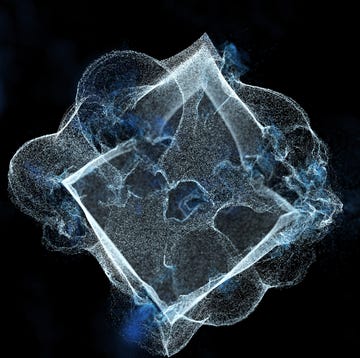
‘Cosmic Fireballs’ Could Explain The Unexplainable

The Earth May Have Once Had Multiple Moons

This Laser Could Unlock Interstellar Travel

How This 400-Year-Old Error Solved a Solar Mystery

NASA Finds Evidence of Past Martian Microbial Life
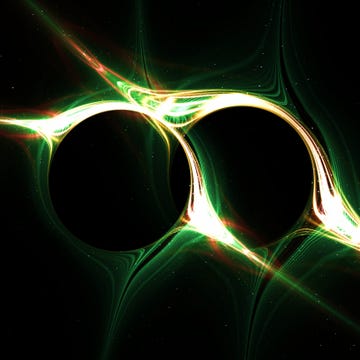
Is This the Answer to the 'Final Parsec Problem'?

Solar Storms Could Soon Lose Their Mystery

This Extreme Moss Could Grow on Mars
- Mobile Site
- Staff Directory
- Advertise with Ars

Filter by topic
- Biz & IT
- Gaming & Culture
Front page layout
Anti-aging —
Nasa wants the voyagers to age gracefully, so it’s time for a software patch, around a half-dozen full-timers and a few part-timers are keeping voyager alive..
Stephen Clark - Oct 24, 2023 12:15 am UTC

Forty-six years in deep space have taken their toll on NASA's twin Voyager spacecraft. Their antiquated computers sometimes do puzzling things, their thrusters are wearing out, and their fuel lines are becoming clogged. Around half of their science instruments no longer return data, and their power levels are declining.
Still, the lean team of engineers and scientists working on the Voyager program at NASA's Jet Propulsion Laboratory are taking steps to eke out every bit of life from the only two spacecraft flying in interstellar space, the vast volume of dilute gas outside the influence of the Sun's solar wind.
"These are measures that we're trying to take to extend the life of the mission," said Suzanne Dodd, Voyager project manager at JPL, in an interview with Ars.
Voyager's instruments are studying cosmic rays, the magnetic field, and the plasma environment in interstellar space. They're not taking pictures anymore. Both probes have traveled beyond the heliopause, where the flow of particles emanating from the Sun runs into the interstellar medium.
"These two spacecraft are still operating, still returning uniquely valuable science data, and every extra day we get data back is a blessing," Dodd said.
While spacecraft engineers love redundancy, they no longer have the luxury of backups on the Voyagers. That means, in any particular section of the spacecraft, a failure of a single part could bring the mission to a halt.
"Everything on both spacecraft is single-string," Dodd said. "There are not any backup capabilities left. In some cases, we powered off stuff to save power, just to keep the instruments on."
Problem-solving from more than 12 billion miles away
Over the weekend, ground controllers at JPL planned to uplink a software patch to Voyager 2. It's a test before the ground team sends the same patch to Voyager 1 to resolve a problem with one of its onboard computers. This problem first cropped up in 2022, when engineers noticed the computer responsible for orienting the Voyager 1 spacecraft was sending down garbled status reports despite otherwise operating normally. It turns out the computer somehow entered an incorrect mode, according to NASA .
Managers wanted to try the patch on Voyager 2 before transmitting it to Voyager 1, which is flying farther from Earth, deeper into interstellar space. That makes observations of the environment around Voyager 1 more valuable to scientists.
At the same time, engineers have devised a new way to operate the thrusters on both Voyager spacecraft. These small rocket engines—fired autonomously—are necessary to keep the main antenna on each probe pointed at Earth. There's a buildup of propellant residue in the narrow lines that feed hydrazine fuel to the thrusters. NASA says the buildup is "becoming significant" in some of the lines, so engineers beamed up fresh commands to the spacecraft in the last few weeks to allow the probes to rotate slightly further in each direction before firing the thrusters.
This will result in the spacecraft performing fewer, longer firings, each of which adds to the residue in the fuel lines. The downside of this change is that science data transmitted back to Earth could occasionally be lost, but over time, the ground team concluded the plan would allow the Voyagers to return more data, NASA said.
With these steps, engineers expect the propellant inlet tubes won't become completely blocked for at least five more years, and "possibly much longer," NASA said. There are other things engineers could try to further extend the lifetime of the thrusters.
“This far into the mission, the engineering team is being faced with a lot of challenges for which we just don’t have a playbook,” said Linda Spilker, Voyager project scientist at JPL, in a statement. “But they continue to come up with creative solutions.”
reader comments
Channel ars technica.
- Things to do in St. Louis
- Opportunity Grants
Strange L oo p
2009 - 2023, union station, st. louis, mo, uptime 15,364 days - the computers of voyager.
The Voyager 1 and Voyager 2 space probes, both launched in 1977, each had a primary objective to explore Jupiter and Saturn. This goal was achieved by 1981. Yet Voyager, NASA's longest running mission, has continued to this day. Both Voyager probes are still operating, and returning scientific data from outside our solar system.
This talk explores the computing systems of Voyager - the systems which enable remote control of the spacecraft, and provide for the recording and return of data to Earth. These systems have proved to be both adaptable, durable, and resilient in support of a scientific undertaking now in it's fifth decade.
What can we learn from the engineering of Voyager's computing systems? Why have they survived for so long in the harsh environment of space? What is involved in patching a system from a billion miles away? And what does the future hold?
Aaron Cummings

Aaron Cummings is a software developer working in the semiconductor industry, currently leading a team working on tools for building and testing embedded memories. He has had a long term fascination with the space program, and has been interested in Voyager since seeing the pictures returned from Jupiter and Saturn in the 1980s.
© 2009-2023 Strange Loop | Privacy Policy
Labor Day Sale Ends 9/2 Shop Now

The Voyager Series is the crown jewel of gamers and content creators alike. Game Supreme and perform any content-focused task with unparalleled performance!
Out of Stock
This product is currently out of stock. Enter your email below to be notified once the product is back in stock.
High-quality, multi-panel artistic prints for your PC.

Gorgeous, swappable artwork for the Starforge Platelight.

Durable UV printed acrylic panels. 12x18 in.

High resolution, durable desk mats. Large and multifunctional. Desk Mats are 90cm x 40cm.

I would like the chance to watch my PC built live. This option can add 7-10 days of processing. More Info

- CPU Intel Core i7-14700K
- CPU Cooler Starforge Custom Bitspower 360mm Liquid Cooler
- RAM Teamgroup Delta RGB 32GB DDR5 6000 CL38 (2x16GB)
- Motherboard MSI Z790 Tomahawk Wifi DDR5
- Graphics Card GeForce RTX™ 4070 Ti Super 16GB
- Cables CableMod Pro ModMesh Sleeved Cable Extensions (Black)
- Primary Storage 2TB PCIe 4.0 NVME (min. 7,000 read)
- Power Supply MSI MPG A850G PCIe 5
- RGB Fans 6 x Bitspower 120mm ARGB
- Case Lian Li O11D Evo RGB Mid-Tower (Black)
- Add. Components Starforge Platelight
- Op. System Windows 11 Home
Performance
Options, options, options.
Swappable acrylic panels make changing your Platelight as easy as picking what’s next.
The Starforge Systems Difference

Hand picked, hand built, hand shipped, all right here in the U.S. Starforge Systems prides itself on delivering a white glove service with every computer purchased.

Computers are for gaming, not worrying. Because of that, we offer a 2 year full parts and labor warranty, so you can focus on the thing that matters most - having fun.
My Starforge Cart
You haven’t selected any of our wares., case prints.

$149.99 USD

$199.99 USD
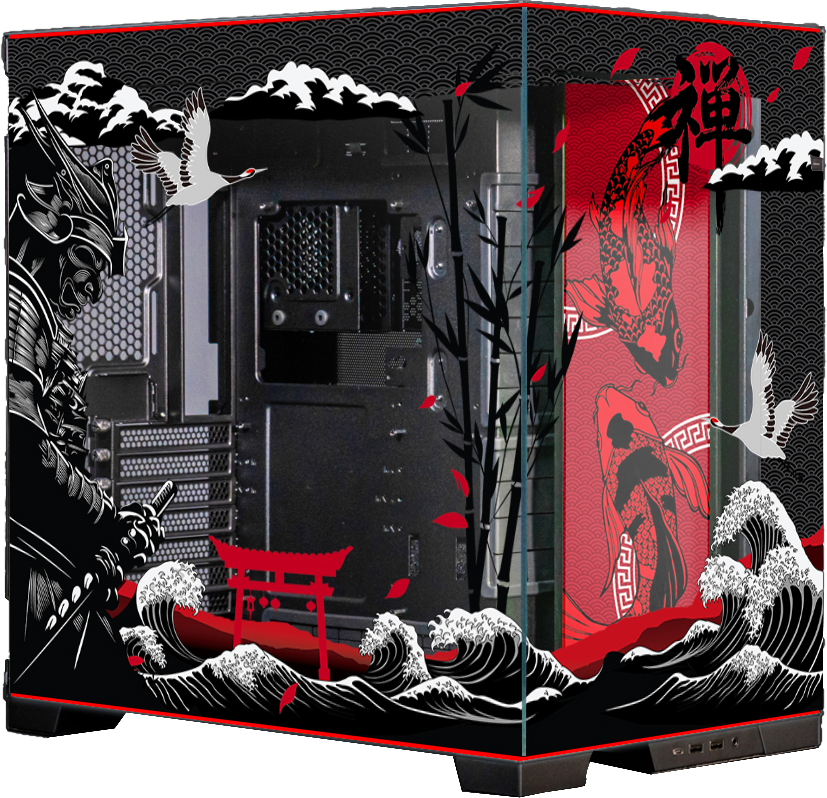
Platelight Acrylics

Popular Peripherals
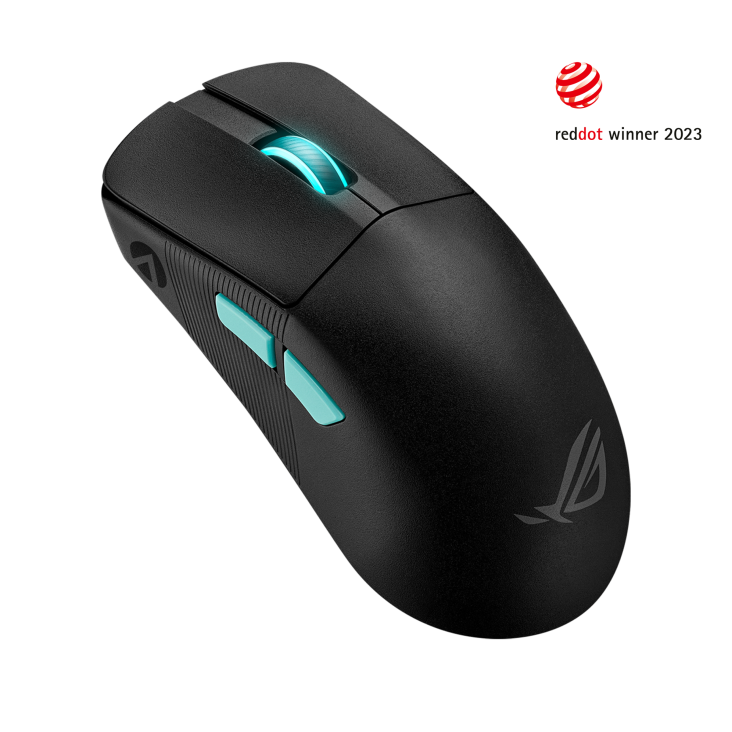
$128.32 USD
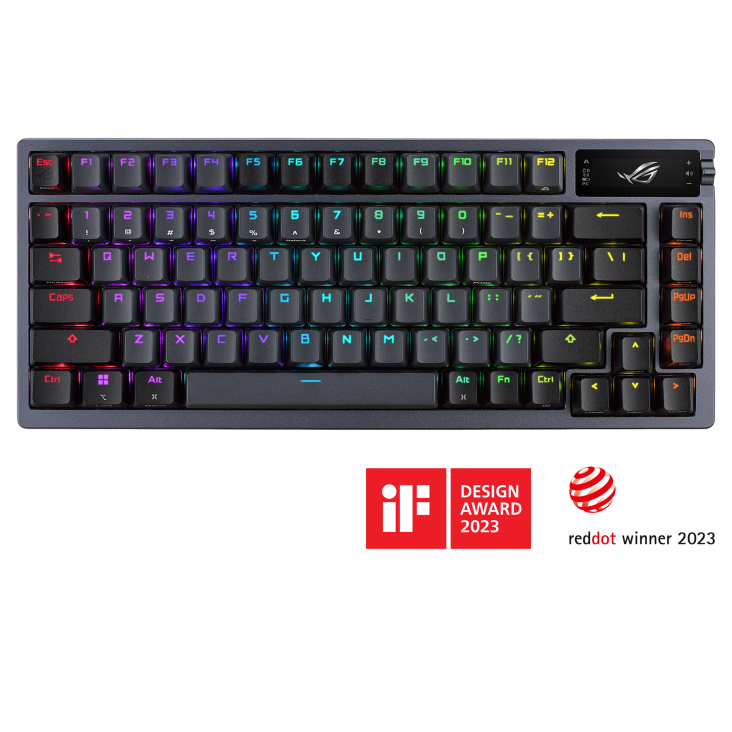
$214.99 USD
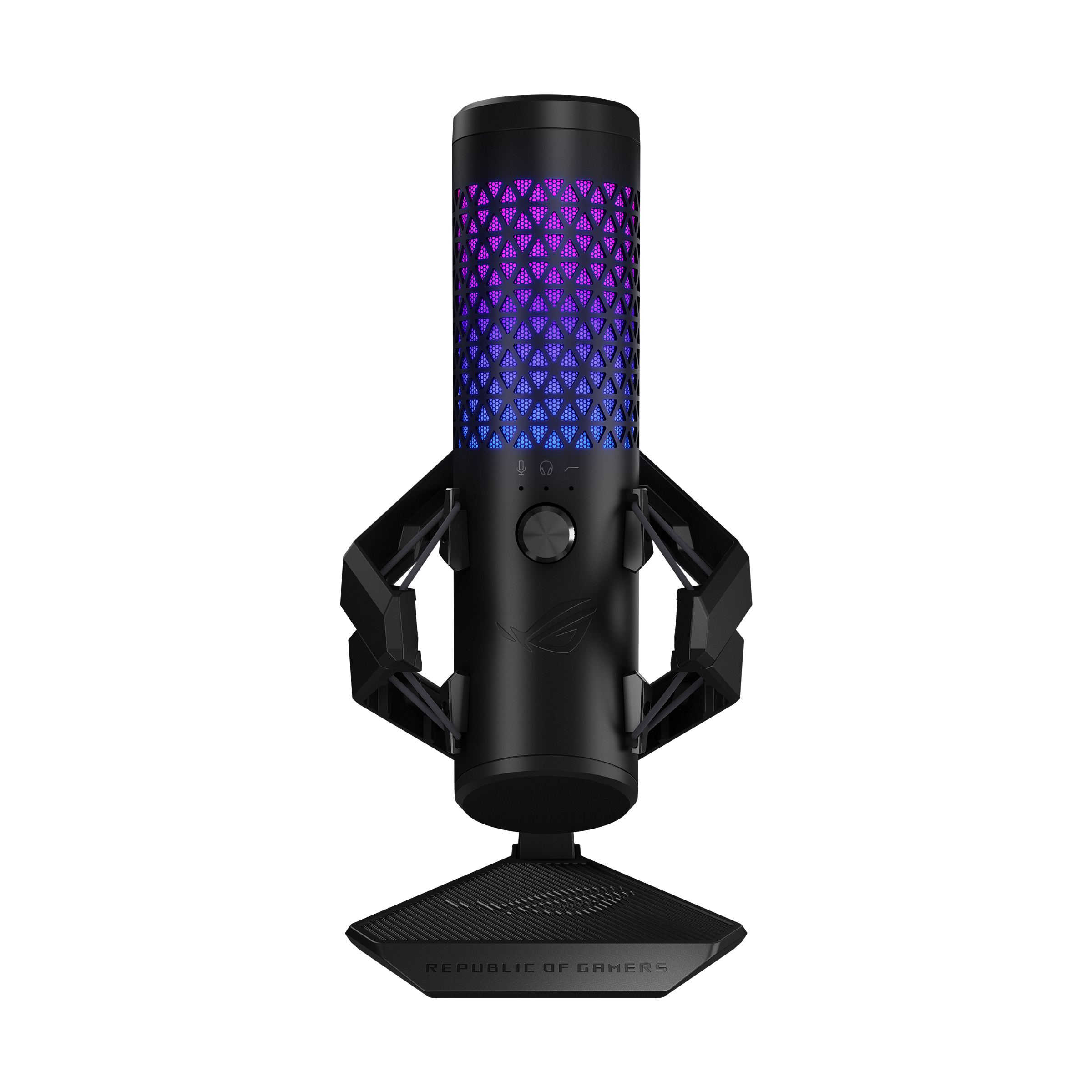
$179.99 USD
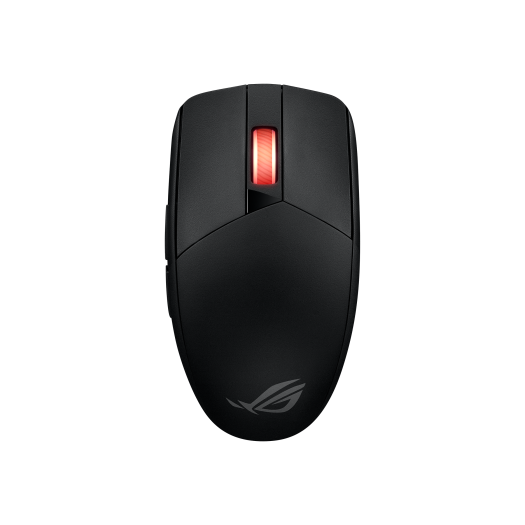
$159.99 USD
$69.99 usd $69.99 usd, $159.99 usd $159.99 usd, $179.99 usd $179.99 usd, $128.32 usd $128.32 usd, $214.99 usd $214.99 usd, starforge platelight.
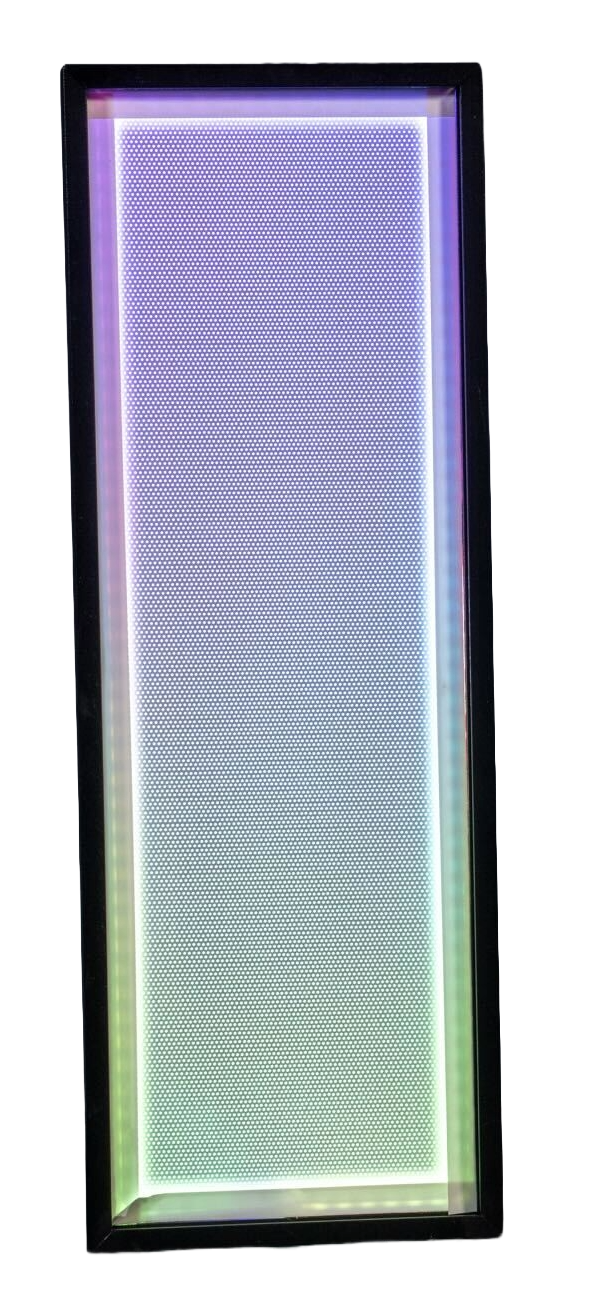
45 Years Ago: Voyager 2 Begins Its Epic Journey to the Outer Planets and Beyond
The ambitious mission took advantage of a rare alignment of the outer planets before continuing its journey into interstellar space.
Forty-five years ago, the Voyager 2 spacecraft left Earth to begin an epic journey that continues to this day. The first of a pair of spacecraft, Voyager 2 lifted off on Aug. 20, 1977. NASA’s Jet Propulsion Laboratory in Southern California manages the spacecraft on their missions to explore the outer planets and beyond. Taking advantage of a rare planetary alignment to use the gravity of one planet to redirect the spacecraft to the next, the Voyagers initially targeted only Jupiter and Saturn, but Voyager 2 went on to explore Uranus and Neptune as well. The Voyagers carried sophisticated instruments to conduct their in-depth explorations of the outer planets. Both spacecraft continue to return data as they make their way out of our solar system and enter interstellar space.

Proposed trajectories for the Thermoelectric Outer Planet Spacecraft Grand Tour, canceled in 1971.
In the 1960s, mission designers at JPL noted that the next alignment of the outer planets that occurs only every 175 years would happen in the late 1970s. Technology had advanced sufficiently that spacecraft could take advantage of this rare alignment to fly by Jupiter and use its gravity to bend their trajectories to visit Saturn, and repeat the process to also visit Uranus, Neptune, and Pluto. Launching several missions to visit each planet individually would take much longer and cost much more. The original plan to send two pairs of Thermoelectric Outer Planet Spacecraft on these Grand Tours proved too costly, leading to cancellation in 1971. The next year, NASA approved a scaled-down version of the project to launch a pair of Mariner-class spacecraft in 1977 to explore just Jupiter and Saturn. On March 7, 1977, NASA Administrator James C. Fletcher announced the renaming of these Mariner Jupiter/Saturn 1977 spacecraft as Voyager 1 and 2. Scientists held out hope that one of them could ultimately visit Uranus and Neptune, thereby fulfilling most of the original Grand Tour’s objectives. Pluto would have to wait many more years for its first visit.

From left: a 1975 illustration of the Mariner Jupiter/Saturn 1977 mission; a model of the Voyager spacecraft; the Aug. 20, 1977, launch of Voyager 2 at Cape Canaveral in Florida.
Each Voyager carried a suite of 11 instruments to study the planets during each encounter and to learn more about interplanetary space in the outer reaches of the solar system, including:
- An imaging science system consisting of narrow-angle and wide-angle cameras to photograph the planet and its satellites.
- A radio science system to determine the planet’s physical properties.
- An infrared interferometer spectrometer to investigate local and global energy balance and atmospheric composition.
- An ultraviolet spectrometer to measure atmospheric properties.
- A magnetometer to analyze the planet’s magnetic field and interaction with the solar wind.
- A plasma spectrometer to investigate microscopic properties of plasma ions.
- A low energy charged particle device to measure fluxes and distributions of ions.
- A cosmic ray detection system to determine the origin and behavior of cosmic radiation.
- A planetary radio astronomy investigation to study radio emissions from Jupiter.
- A photopolarimeter to measure the planet’s surface composition.
- A plasma wave system to study the planet’s magnetosphere.

From left: a schematic of the Voyager spacecraft showing the science experiments; trajectories of the Voyagers through the solar system.
Voyager 2 left Earth first, lifting off on Aug. 20, 1977, atop a Titan IIIE-Centaur rocket from Launch Complex 41 at Cape Canaveral Air Force Station, now Cape Canaveral Space Force Station, in Florida. Although its twin launched two weeks later, it traveled on a faster trajectory and arrived at Jupiter four months earlier. Voyager 2 successfully crossed the asteroid belt between Dec. 10, 1977, and Oct. 21, 1978. In April 1978, its primary radio receiver failed, and it has been operating on its backup receiver ever since.

Voyager 2 images of Jupiter, left, and Saturn with its rings and several of its moons.
Voyager 2 conducted its observations of Jupiter between April 24 and Aug. 5, 1979, making its closest approach of 350,000 miles above the planet’s cloud tops on July 9. The spacecraft returned 17,000 images of Jupiter, many of its satellites, and confirmed Voyager 1’s discovery of a thin ring encircling the planet. Its other instruments returned information about Jupiter’s atmosphere and magnetic field. Jupiter’s massive gravity field bent the spacecraft’s trajectory, accelerating it toward Saturn.
Voyager 2 began its long-range observations of the ringed planet on June 5, 1981, passed within 26,000 miles of the planet’s cloud tops on Aug. 26, and concluded its studies on Sept. 4. The spacecraft captured 16,000 photographs of the planet, its rings, and many of its known satellites. It discovered several new ones, and its instruments returned data about Saturn’s atmosphere. Saturn’s gravity sent Voyager 2 on to Uranus.

Voyager 2 images of Uranus, left, and Neptune.
Voyager 2 carried out the first close-up observations of Uranus between Nov. 4, 1985, and Feb. 25, 1986, making its closest approach of 50,700 miles above the planet’s cloud tops on Jan. 24, 1986. It returned more than 7,000 photographs of the planet, its rings and moons, discovering two new rings and 11 new moons. The spacecraft’s instruments returned data about the planet’s atmosphere and its unusual magnetic field, tilted by 59 degrees compared to its rotational axis and offset from the planet’s center by about one-third of the planet’s radius.
Voyager 2 took advantage of Uranus’ gravity to send it on to its last planetary destination, Neptune. The spacecraft conducted the first close-up observations of the eighth planet between June 5 and Oct. 2, 1989, making its flyby just 3,408 miles above its north pole on Aug. 25, its closest approach to any planet since leaving Earth in 1977. This trajectory allowed Voyager 2 to observe Neptune’s large moon Triton, the last solid object it explored. During the encounter, it returned more than 9,000 images of the planet, its atmosphere, dark rings, and moons, discovering six new moons. Like Uranus, Voyager 2’s instruments revealed that Neptune has an unusual magnetic field, not only tilted 47 degrees from the planet’s axis but also significantly offset from the planet’s center.

An illustration showing the position of the Voyager 1 and 2 spacecraft outside of the heliosphere, a protective bubble created by the sun that extends well past the orbit of Neptune.
Following its reconnaissance of Neptune, Voyager 2 began its Interstellar Mission extension that continues to this day. Over the years, several of the spacecraft’s instruments have been turned off to conserve power, beginning with the imaging system in 1998, but it continues to return data about cosmic rays and the solar wind. On Nov. 5, 2018, six years after its twin, Voyager 2 crossed the heliopause, the boundary between the heliosphere – the bubble-like region of space created by the Sun – and the interstellar medium. Currently, Voyager 2 continues its mission, more than 12 billion miles from Earth, so distant that a signal from the spacecraft takes 18 hours to reach Earth, and just as long for a return signal to reach the craft. Engineers expect that Voyager 2 will continue to return data until about 2025. And just in case an alien intelligence finds it one day, Voyager 2 like its twin carries a gold-plated record that contains information about its home planet, including recordings of terrestrial sounds, music, and greetings in 55 languages. Engineers at NASA thoughtfully included instructions on how to play the record.

The gold disc carried by each Voyager.
News Media Contact
Calla Cofield
Jet Propulsion Laboratory, Pasadena, Calif.
626-808-2469
Written by John Uri, NASA’s Johnson Space Center
To revisit this article, visit My Profile, then View saved stories .
- The Big Story
- Newsletters
- Steven Levy's Plaintext Column
- WIRED Classics from the Archive
- WIRED Insider
- WIRED Consulting
Interstellar 8-Track: How Voyager's Vintage Tech Keeps Running

NASA's Voyager 1 spacecraft has gone interstellar .
Launched in 1977, the probe is vintage space hardware. At more than 36 years old, or roughly a millennium in computer years, it's an impressive feat to have the spacecraft drifting through the material between stars. Looking at the machine’s specs is a reminder of how far electronics have come in the intervening years.
The computer room during Voyager's testing days.
“Here on the ground, we keep up with the latest technology,” said engineer Suzanne Dodd , the Voyager project manager at JPL, with most of the science team using Mac power books these days. She recalled when she started working with the mission in 1984, they were using then-state-of-the-art desktop computers with 8-inch floppy drives.
But Voyager 1 and 2 are from an even earlier era and, being 19 billion kilometers away, “you can’t take them into the shop and upgrade them,” said Dodd.
The computers aboard the Voyager probes each have 69.63 kilobytes of memory, total. That’s about enough to store one average internet jpeg file. The probes’ scientific data is encoded on old-fashioned digital 8-track tape machines rather than whatever solid state drive your high-end laptop is currently using. Once it's been transmitted to Earth, the spacecraft have to write over old data in order to have enough room for new observations.
The Voyager machines are capable of executing about 81,000 instructions per second. The smart phone that is likely sitting in your pocket is probably about 7,500 times faster than that. They transmit their data back to Earth at 160 bits per second. A slow dial-up connection can deliver at least 20,000 bits per second.
The Voyager probes are always sending out a signal. Voyager 1 has a 22.4-Watt transmitter – something equivalent to a refrigerator light bulb – but by the time its beacon reaches us, the power has been reduced to roughly 0.1 billion-billionth of a Watt. NASA has to use its largest antenna, a 70-meter dish , or combine two 34-meter antennas, just to hear Voyager.

The science team communicates with Voyager 1 and 2 every day and typically needs at least four hours just to run through all their health and safety checks. On a good day, researchers might spend double that time sending commands and receiving data. The spacecrafts’ original control and analysis software was written in Fortran 5 (later ported to Fortran 77). Some of the software is still in Fortran, though other pieces have now been ported to the somewhat more modern C.
Voyager's internal components during assembly.
Part of the Voyager probes’ longevity comes from the fact that they were robustly built and included plenty of redundant components. Even having two machines to accomplish the same task is something that NASA doesn’t do much of these days (Imagine if we had two Curiosity rovers on Mars).
Practically all of Voyager's redundancy is gone now, either because something broke along the way or it was turned off to conserve power. Of the 11 original instruments on Voyager 1, only five remain operational: the UV spectrometer, the magnetometer, a charged particle detector, a cosmic ray detector, and the plasma wave system. But as the hardware ages, more and more things can break.
“We’re always one failure away from losing the mission,” said Dodd.
Still, the Voyager probes have far exceeded expectations. Looking at engineers' testimonials from when it was built, Dodd said the original designers were told not to worry about reaching interstellar space and focus on making sure the Voyagers could observe Jupiter and Saturn.
“Basically they kind of ignored those directions, nodded their heads and did what they wanted to make it capable of getting to interstellar space,” she said.
As long as they are still functioning, both Voyager spacecraft will continue to collect data and send it back to us through at least 2020, and possibly until 2025. Even if something breaks and they are suddenly unable to hear anything from Earth, they will keep sending data back, repeating the same sets of observations until they run out of power.
But the radioisotope batteries on Voyager 1 and 2 are diminishing, putting out four Watts less per year. Mission managers will one day have to prioritize which instruments are most important during the voyage through interstellar space, shutting them off one by one as the years go on. After that, both probes will remain within range of our antennas until perhaps 2036. Though scientific data won’t be returned, engineering data could still come back if there is enough power to send a signal. All this means that the mission isn’t yet done.
“We’ve just stepped into interstellar space,” said Dodd. “We’re just going across the horizon line and there are many more discoveries to come.”


Suggested Searches
- Climate Change
- Expedition 64
- Mars perseverance
- SpaceX Crew-2
- International Space Station
- View All Topics A-Z
Humans in Space
Earth & climate, the solar system, the universe, aeronautics, learning resources, news & events.
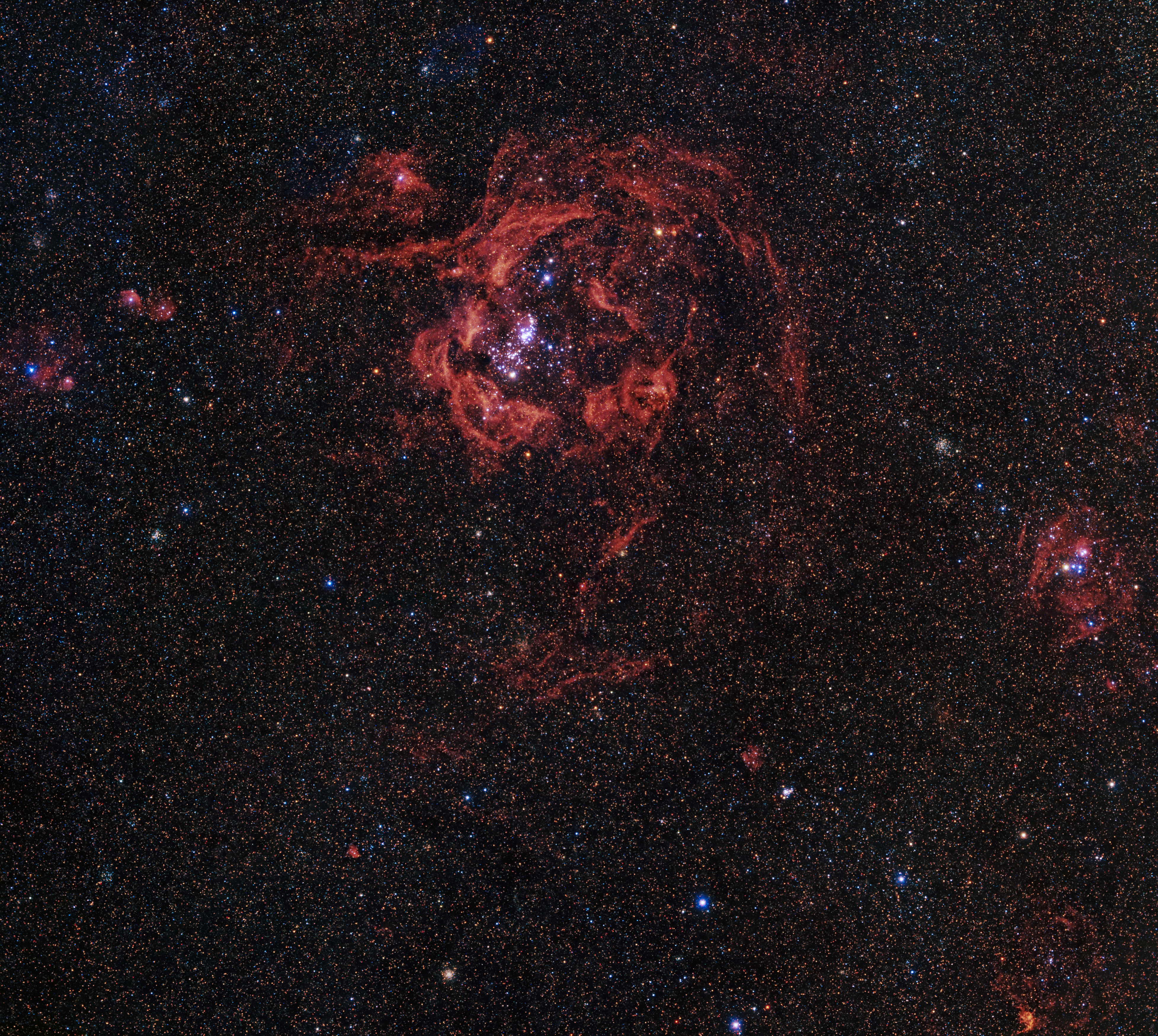
Hubble Zooms into the Rosy Tendrils of Andromeda
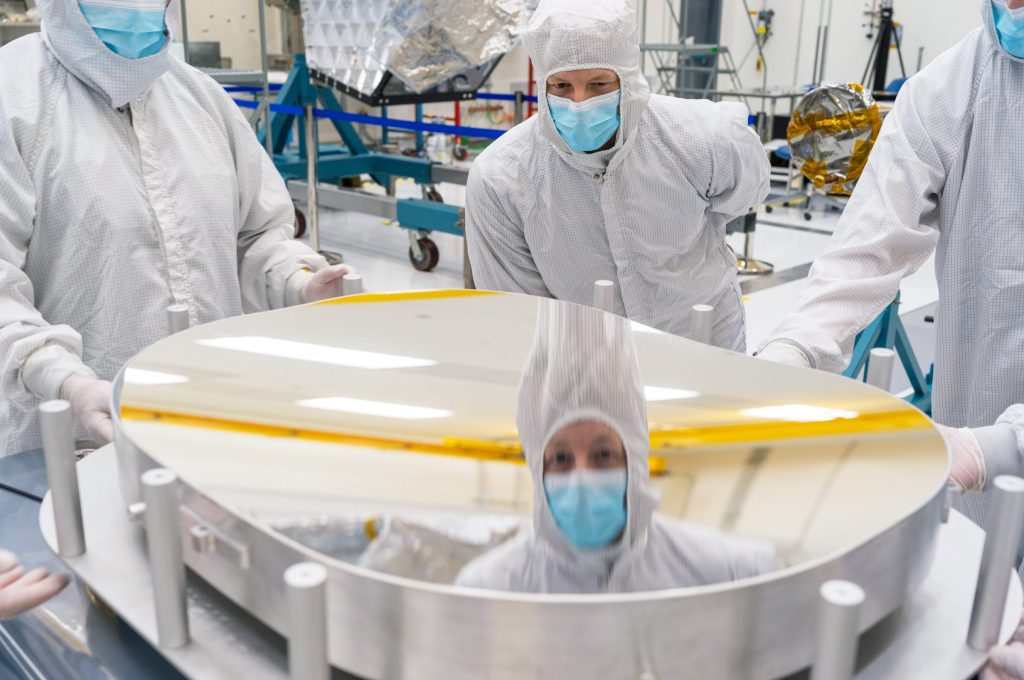
Work Is Under Way on NASA’s Next-Generation Asteroid Hunter

NASA’s Roman Space Telescope to Investigate Galactic Fossils
- Search All NASA Missions
- A to Z List of Missions
- Upcoming Launches and Landings
- Spaceships and Rockets
- Communicating with Missions
- James Webb Space Telescope
- Hubble Space Telescope
- Why Go to Space
- Commercial Space
- Destinations
- Living in Space
- Explore Earth Science
- Earth, Our Planet
- Earth Science in Action
- Earth Multimedia
- Earth Science Researchers
- Pluto & Dwarf Planets
- Asteroids, Comets & Meteors
- The Kuiper Belt
- The Oort Cloud
- Skywatching
- The Search for Life in the Universe
- Black Holes
- The Big Bang
- Dark Energy & Dark Matter
- Earth Science
- Planetary Science
- Astrophysics & Space Science
- The Sun & Heliophysics
- Biological & Physical Sciences
- Lunar Science
- Citizen Science
- Astromaterials
- Aeronautics Research
- Human Space Travel Research
- Science in the Air
- NASA Aircraft
- Flight Innovation
- Supersonic Flight
- Air Traffic Solutions
- Green Aviation Tech
- Drones & You
- Technology Transfer & Spinoffs
- Space Travel Technology
- Technology Living in Space
- Manufacturing and Materials
- Science Instruments
- For Kids and Students
- For Educators
- For Colleges and Universities
- For Professionals
- Science for Everyone
- Requests for Exhibits, Artifacts, or Speakers
- STEM Engagement at NASA
- NASA's Impacts
- Centers and Facilities
- Directorates
- Organizations
- People of NASA
- Internships
- Our History
- Doing Business with NASA
- Get Involved
NASA en Español
- Aeronáutica
- Ciencias Terrestres
- Sistema Solar
- All NASA News
- Video Series on NASA+
- Newsletters
- Social Media
- Media Resources
- Upcoming Launches & Landings
- Virtual Guest Program
- Image of the Day
- Sounds and Ringtones
- Interactives
- STEM Multimedia
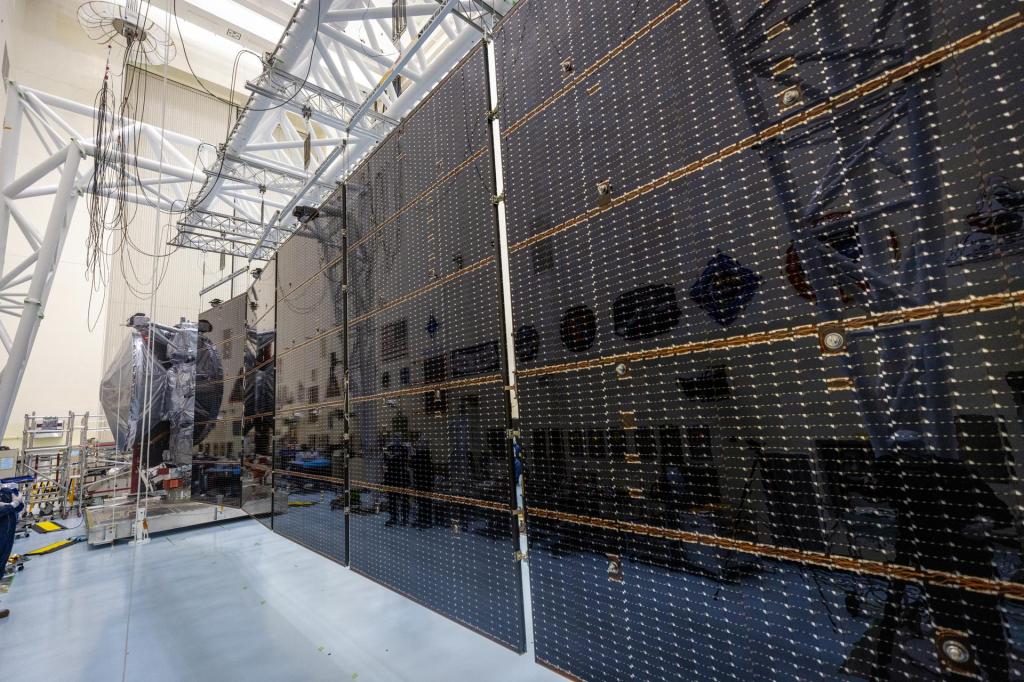
NASA’s Europa Clipper Gets Set of Super-Size Solar Arrays

FAQ: NASA’s Boeing Crew Flight Test Return Status

NASA, Boeing Optimizing Vehicle Assembly Building High Bay for Future SLS Stage Production

NASA Seeks Input for Astrobee Free-flying Space Robots


NASA Funds Studies to Support Crew Performance on Long-Duration Missions

NASA JPL Developing Underwater Robots to Venture Deep Below Polar Ice
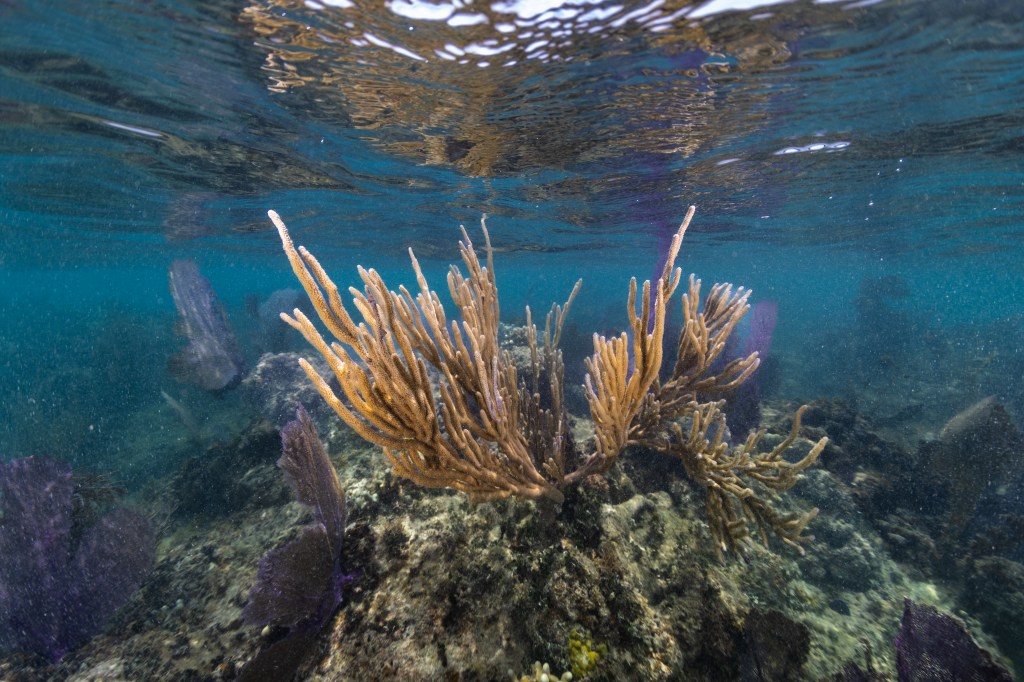
NASA Project in Puerto Rico Trains Students in Marine Biology
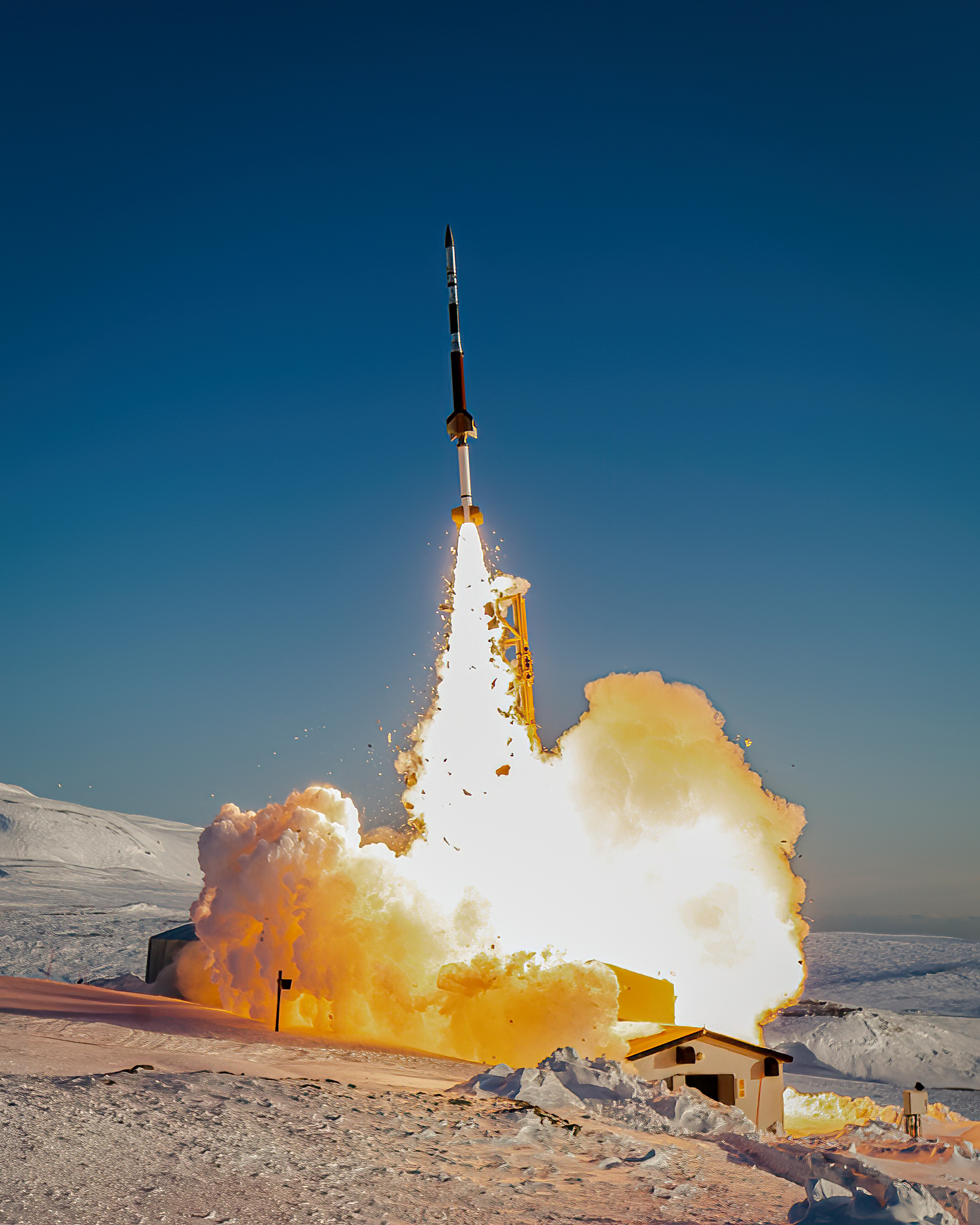
NASA Discovers a Long-Sought Global Electric Field on Earth
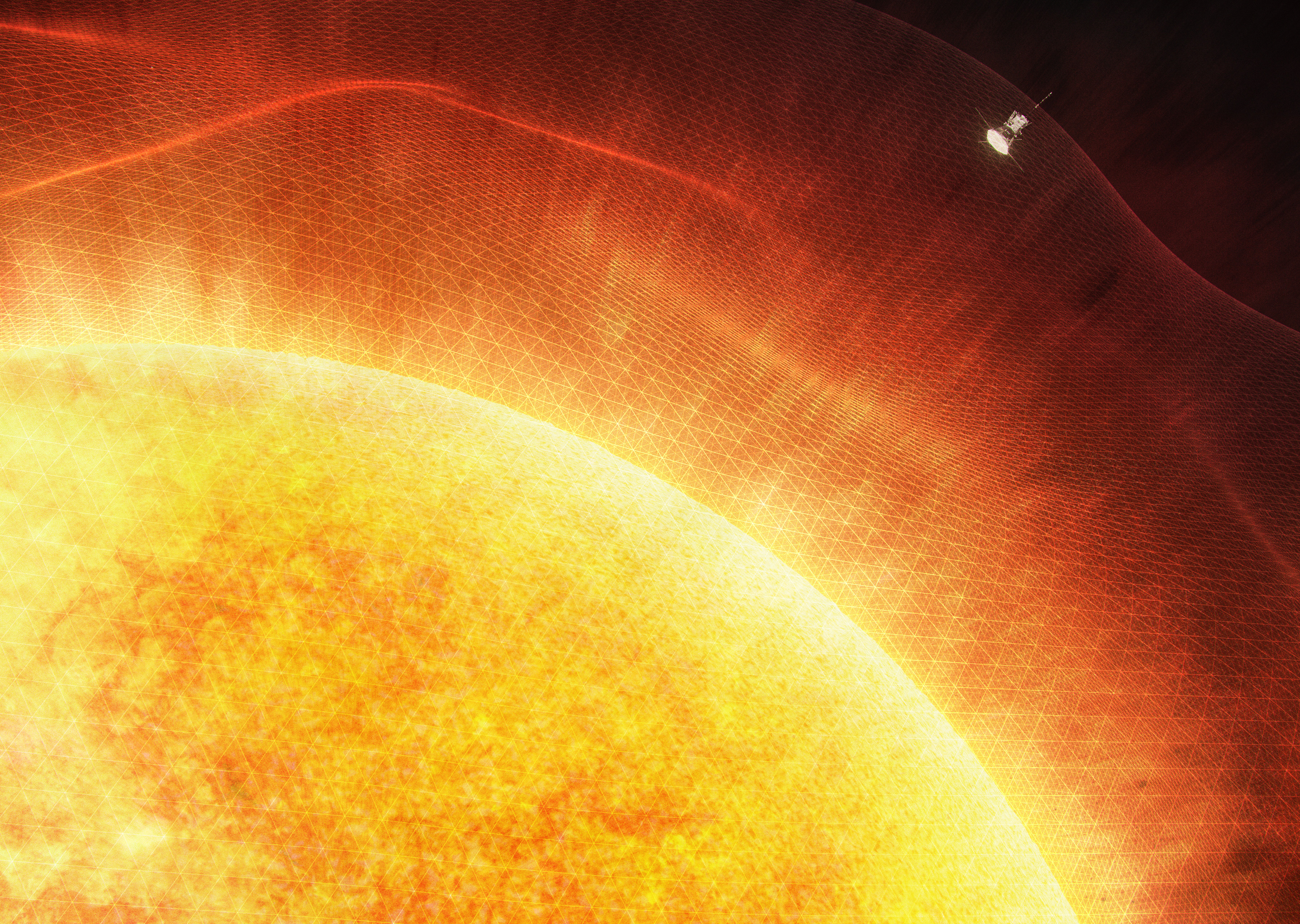
NASA, ESA Missions Help Scientists Uncover How Solar Wind Gets Energy
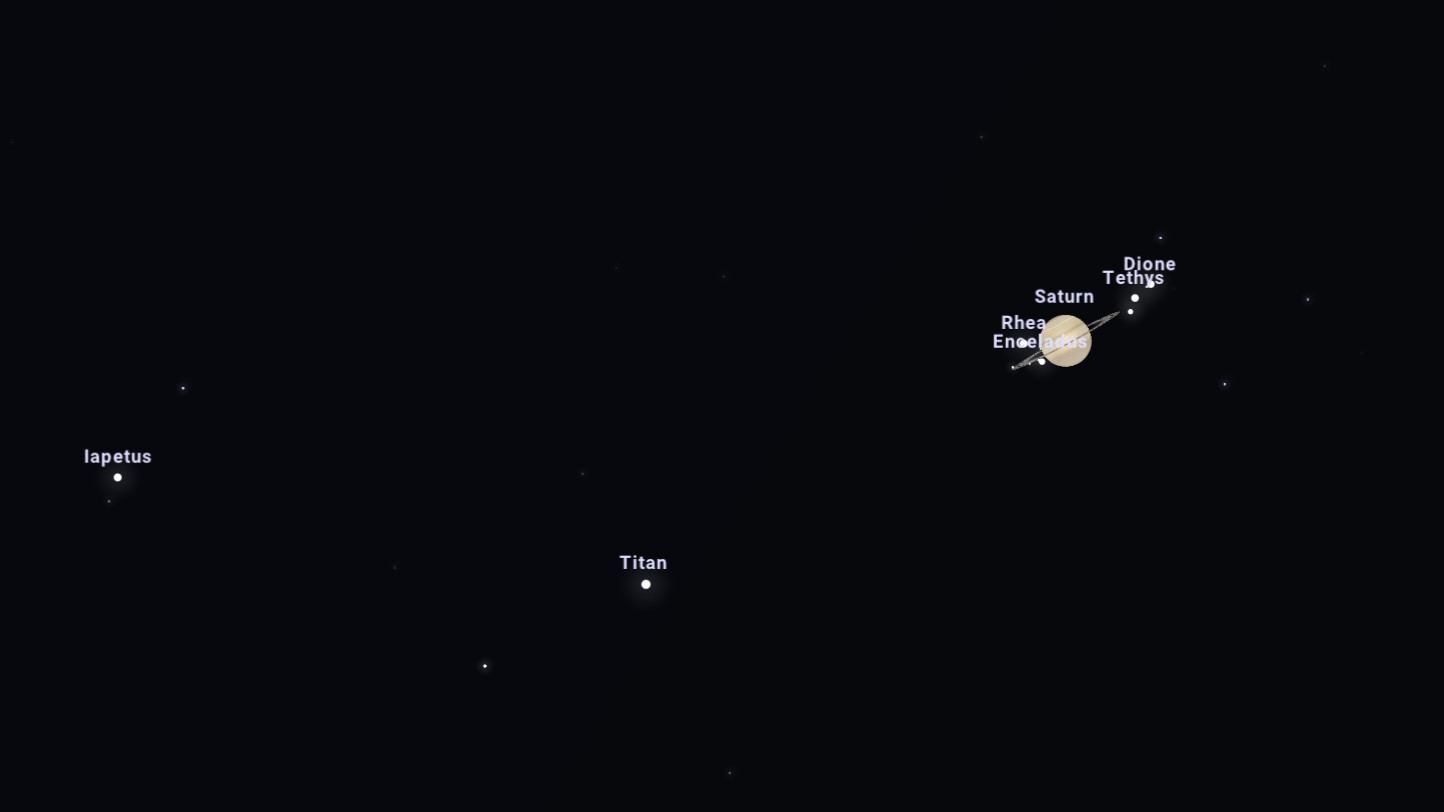
September’s Night Sky Notes: Marvelous Moons

Amendment 45: New Opportunity: A.60 Ecological Conservation

NASA G-IV Plane Will Carry Next-Generation Science Instrument
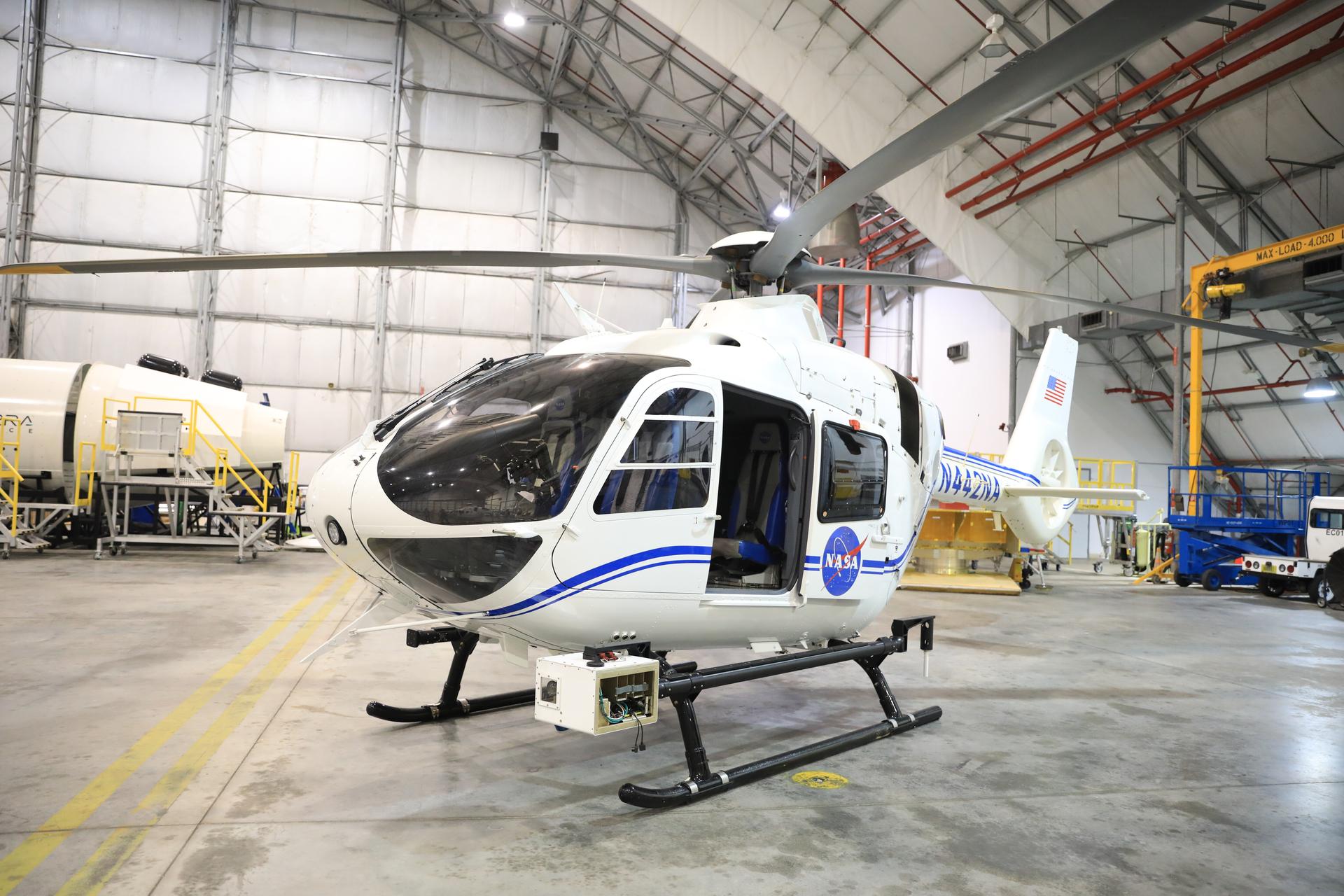
NASA Develops Pod to Help Autonomous Aircraft Operators
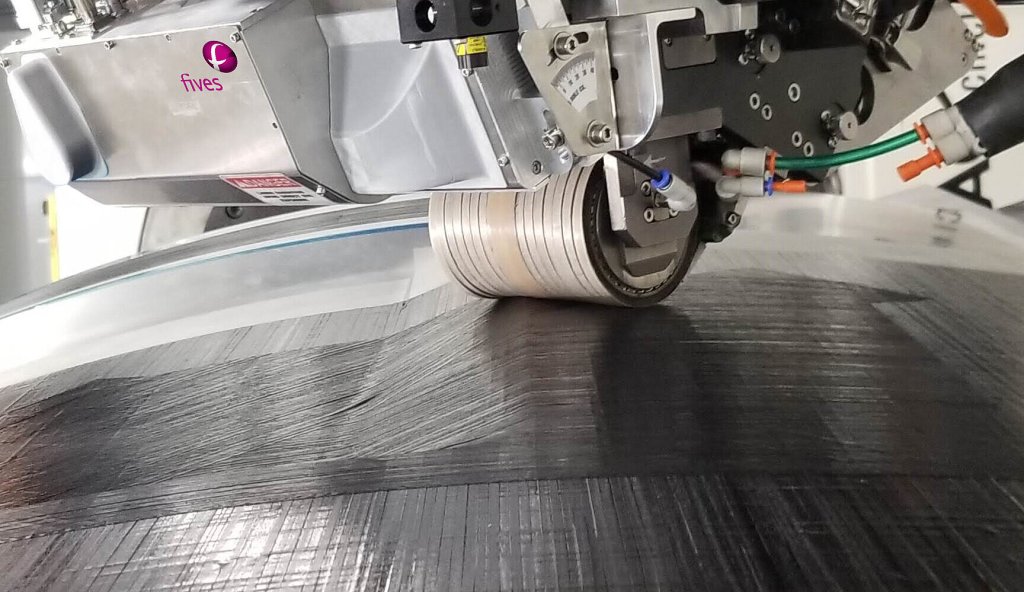
NASA Composite Manufacturing Initiative Gains Two New Members
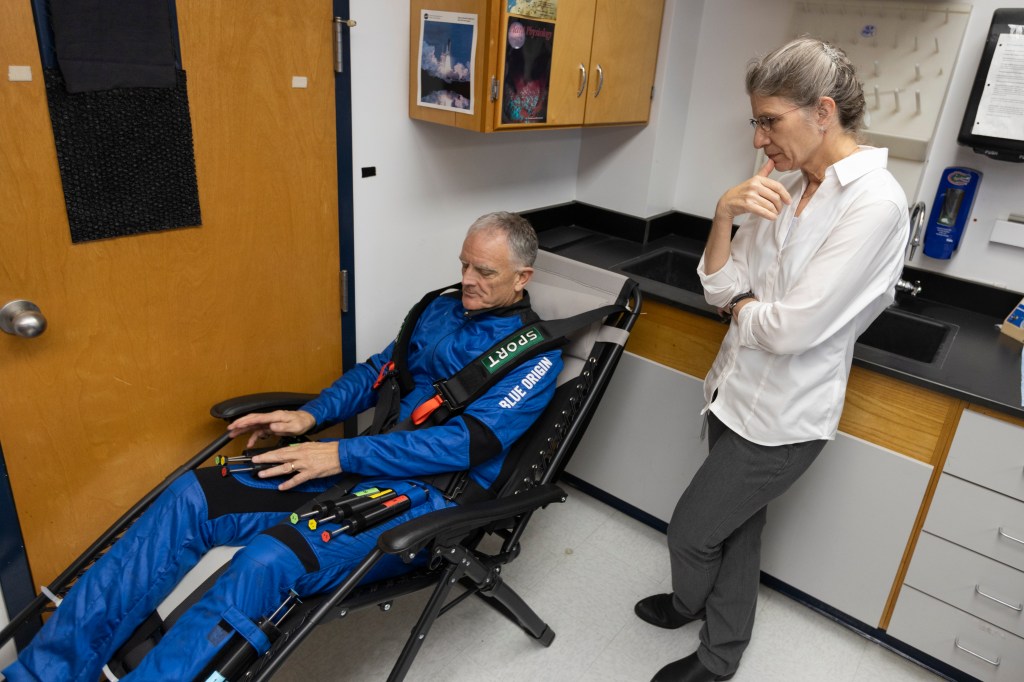
First NASA-Supported Researcher to Fly on Suborbital Rocket

How Do I Navigate NASA Learning Resources and Opportunities?
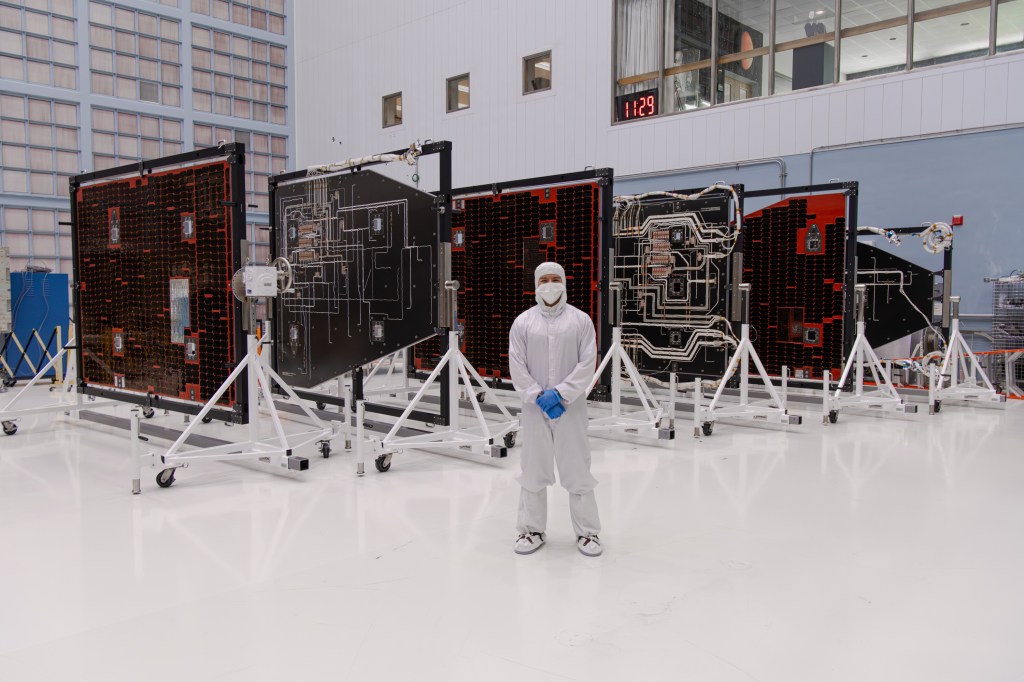
Aaron Vigil Helps Give SASS to Roman Space Telescope
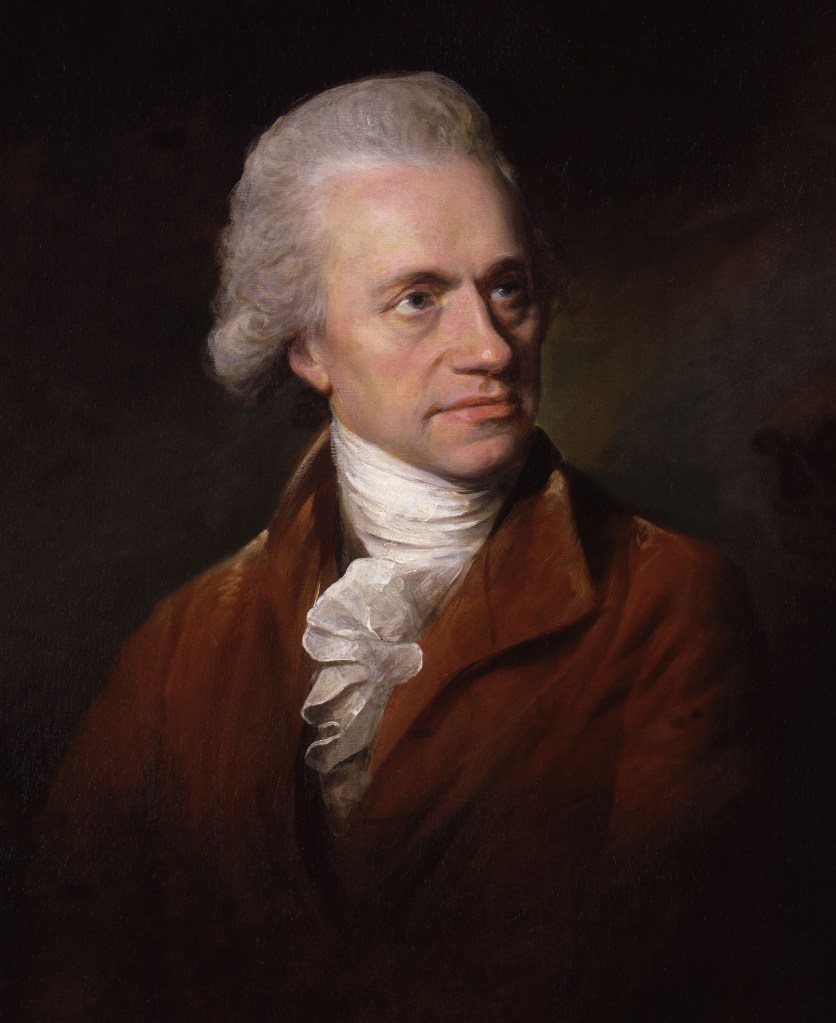
235 Years Ago: Herschel Discovers Saturn’s Moon Enceladus
Preguntas frecuentes: estado del retorno de la prueba de vuelo tripulado boeing de la nasa.

Astronauta de la NASA Frank Rubio

Diez maneras en que los estudiantes pueden prepararse para ser astronautas
45 years ago: voyager 2 begins its epic journey to the outer planets and beyond, johnson space center.
Forty-five years ago, the Voyager 2 spacecraft left Earth to begin an epic journey that continues to this day. The first of a pair of spacecraft, Voyager 2 lifted off on Aug. 20, 1977. NASA’s Jet Propulsion Laboratory (JPL) in Pasadena, California, manages the spacecraft on their missions to explore the outer planets and beyond. Taking advantage of a rare planetary alignment to use the gravity of one planet to redirect the spacecraft to the next, the Voyagers initially targeted only Jupiter and Saturn, but Voyager 2 went on to explore Uranus and Neptune as well. The Voyagers carried sophisticated instruments to conduct their in-depth explorations of the outer planets. Both spacecraft continue to return data as they make their way out of our solar system and enter interstellar space.
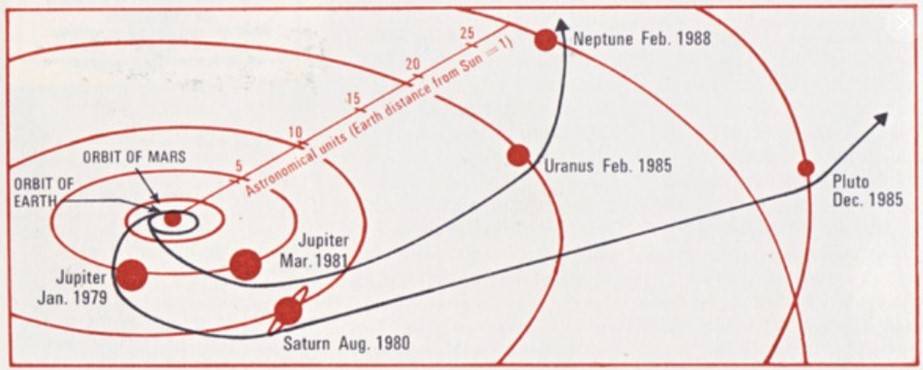
In the 1960s, mission designers at JPL noted that the next alignment of the outer planets that occurs only every 175 years would happen in the late 1970s. Technology had advanced sufficiently that spacecraft could take advantage of this rare alignment to flyby Jupiter and use its gravity to bend their trajectories to visit Saturn, and repeat the process to also visit Uranus, Neptune, and Pluto. Launching several missions to visit each planet individually would take much longer and cost much more. The original plan to send two pairs of Thermoelectric Outer Planet Spacecraft on these Grand Tours proved too costly leading to its cancellation in 1971. The next year, NASA approved a scaled-down version of the project to launch a pair of Mariner-class spacecraft in 1977 to explore just Jupiter and Saturn. On March 7, 1977, NASA Administrator James C. Fletcher announced the renaming of these Mariner Jupiter/Saturn 1977 spacecraft as Voyager 1 and 2. Scientists held out hope that one of them could ultimately visit Uranus and Neptune, thereby fulfilling most of the original Grand Tour’s objectives – Pluto would have to wait many more years for its first visit.
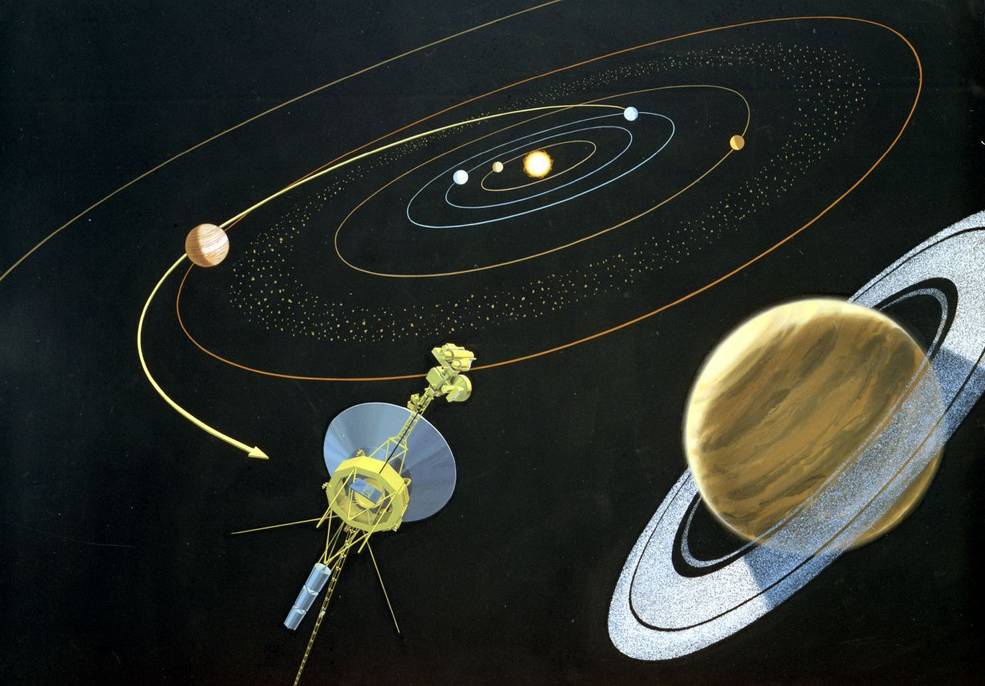
Each Voyager carried a suite of 11 instruments to study the planets during each encounter and to learn more about interplanetary space in the outer reaches of the solar system, including:
- An imaging science system consisting of narrow-angle and wide-angle cameras to photograph the planet and its satellites.
- A radio science system to determine the planet’s physical properties.
- An infrared interferometer spectrometer to investigate local and global energy balance and atmospheric composition.
- An ultraviolet spectrometer to measure atmospheric properties.
- A magnetometer to analyze the planet’s magnetic field and interaction with the solar wind.
- A plasma spectrometer to investigate microscopic properties of plasma ions.
- A low energy charged particle device to measure fluxes and distributions of ions.
- A cosmic ray detection system to determine the origin and behavior of cosmic radiation.
- A planetary radio astronomy investigation to study radio emissions from Jupiter.
- A photopolarimeter to measure the planet’s surface composition.
- A plasma wave system to study the planet’s magnetosphere.
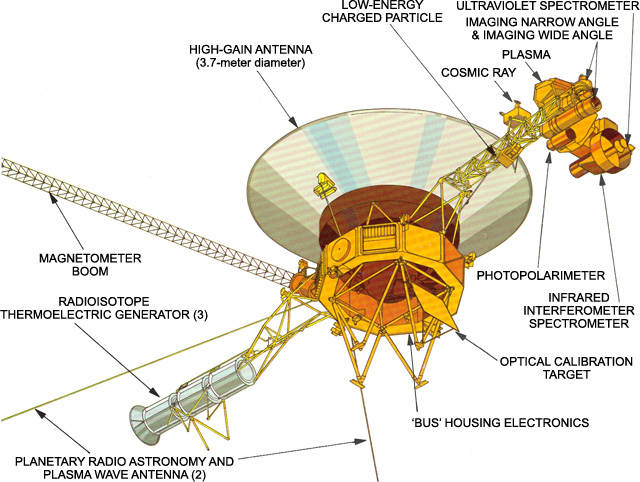
Voyager 2 left Earth first, lifting off on Aug. 20, 1977, atop a Titan IIIE-Centaur rocket from Launch Complex 41 at Cape Canaveral Air Force Station, now Cape Canaveral Space Force Station, in Florida. Although its twin launched two weeks later, it traveled on a faster trajectory and arrived at Jupiter four months earlier. Voyager 2 successfully crossed the asteroid belt between Dec. 10, 1977, and Oct. 21, 1978. In April 1978, its primary radio receiver failed, and it has been operating on its backup receiver ever since.
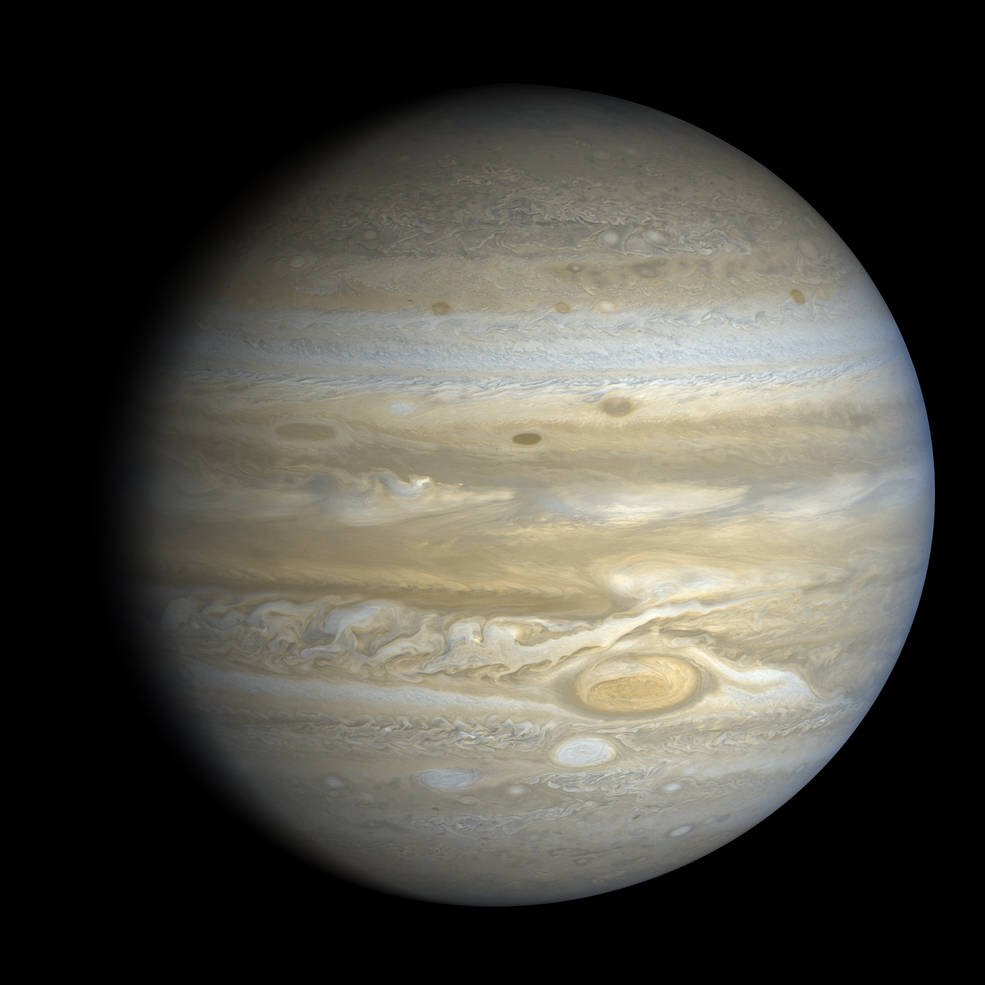
Voyager 2 conducted its observations of Jupiter between April 24 and Aug. 5, 1979, making its closest approach of 350,000 miles above the planet’s cloud tops on July 9. The spacecraft returned 17,000 images of Jupiter, many of its satellites, and confirmed Voyager 1’s discovery of a thin ring encircling the planet. Its other instruments returned information about Jupiter’s atmosphere and magnetic field. Jupiter’s massive gravity field bent the spacecraft’s trajectory, accelerating it toward Saturn. Voyager 2 began its long-range observations of the ringed planet on June 5, 1981, passed within 26,000 miles of the planet’s cloud tops on Aug. 26, and concluded its studies on Sept. 4. The spacecraft captured 16,000 photographs of the planet, its rings, and many of its known satellites. It discovered several new ones, while its instruments returned data about Saturn’s atmosphere. Saturn’s gravity sent Voyager 2 on to Uranus.
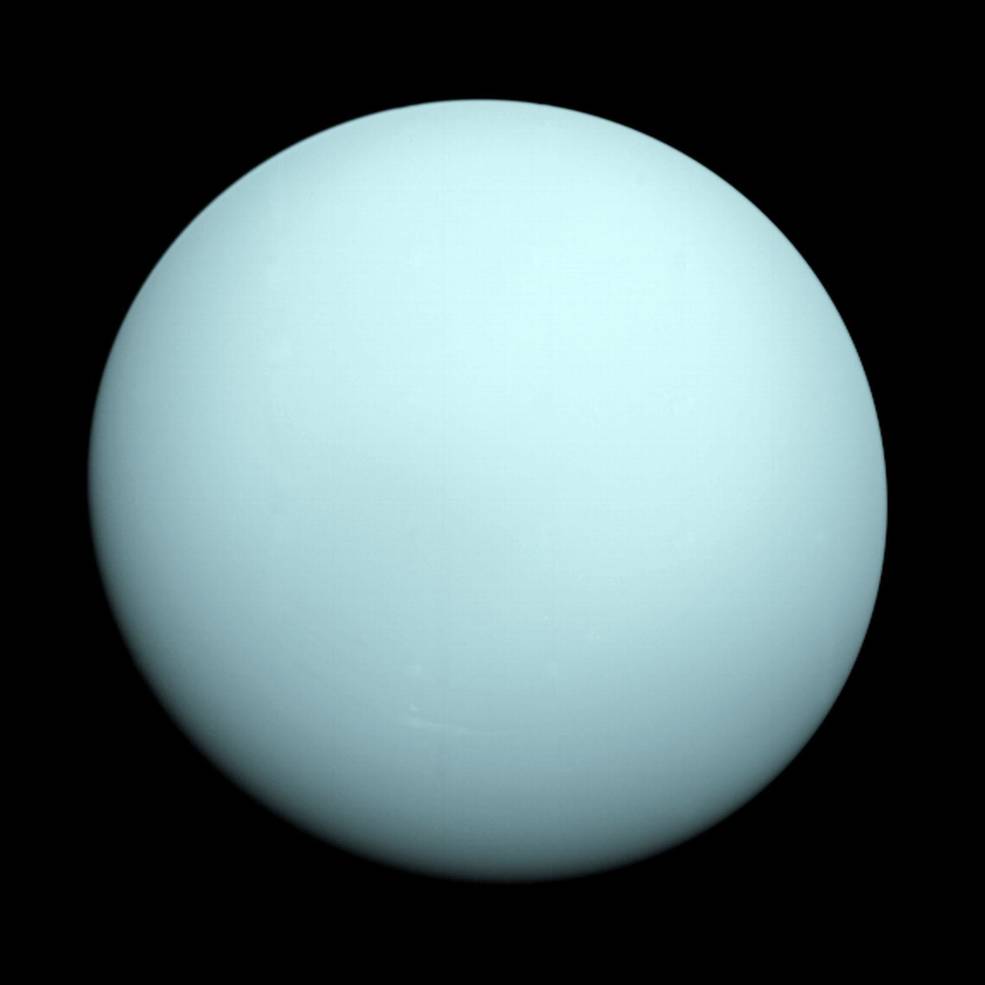
Voyager 2 carried out the first close-up observations of Uranus between Nov. 4, 1985, and Feb. 25, 1986, making its closest approach of 50,700 miles above the planet’s cloud tops on Jan. 24. It returned more than 7,000 photographs of the planet, its rings and moons, discovering two new rings and 11 new moons. The spacecraft’s instruments returned data about the planet’s atmosphere and its unusual magnetic field, tilted by 59 degrees compared to its rotational axis and offset from the planet’s center by about one-third of the planet’s radius. Voyager 2 took advantage of Uranus’ gravity to send it on to its last planetary destination, Neptune. The spacecraft conducted the first close-up observations of the eighth planet between June 5 and Oct. 2, 1989, making its flyby just 3,408 miles above its north pole on Aug. 25, its closest approach to any planet since leaving Earth in 1977. This trajectory allowed Voyager 2 to observe Neptune’s large moon Triton, the last solid object it explored. During the encounter, it returned more than 9,000 images of the planet, its atmosphere, dark rings, and moons, discovering six new moons. Like Uranus, Voyager 2’s instruments revealed that Neptune has an unusual magnetic field, not only tilted 47 degrees from the planet’s axis but also significantly offset from the planet’s center.
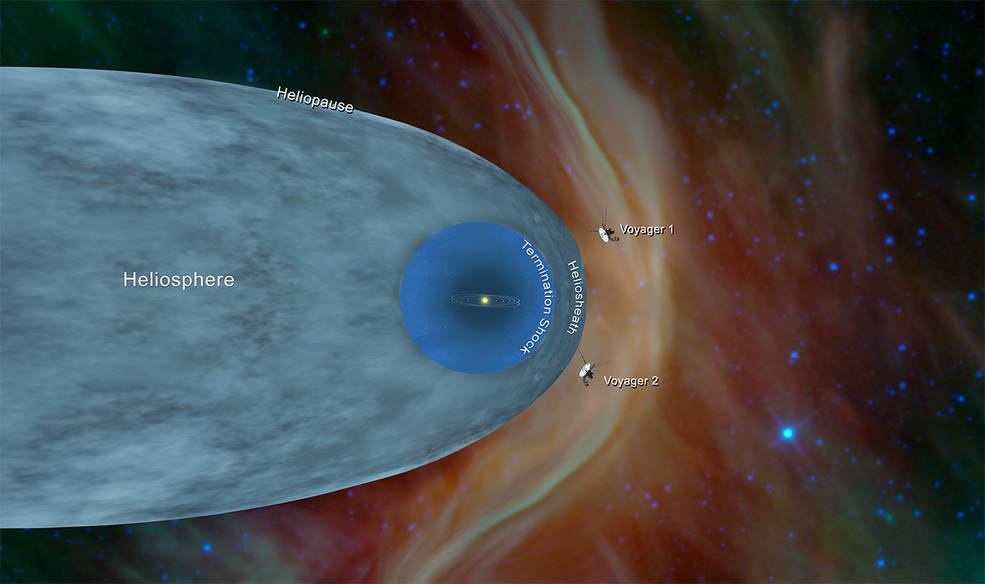
Following its reconnaissance of Neptune, Voyager 2 began its Interstellar Mission extension that continues to this day. Over the years, several of the spacecraft’s instruments have been turned off to conserve power, beginning with the imaging system in 1998, but it continues to return data about cosmic rays and the solar wind. On Nov. 5, 2018, six years after its twin, Voyager 2 crossed the heliopause, the boundary between the heliosphere – the bubble-like region of space created by the Sun – and the interstellar medium. Currently, Voyager 2 continues its mission, more than 12 billion miles from Earth, so distant that a signal from the spacecraft takes 18 hours to reach Earth, and just as long for a return signal to reach the craft. Engineers expect that Voyager 2 will continue to return data until about 2025. And just in case an alien intelligence finds it one day, Voyager 2 like its twin carries a gold-plated record that contains information about its home planet, including recordings of terrestrial sounds, music, and greetings in 55 languages. Engineers at NASA thoughtfully included Instructions on how to play the record.
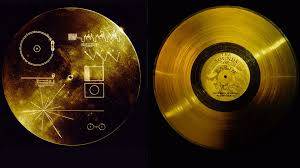
For more on Voyagers 1 and 2, NASA’s longest-lived missions, please visit here , with thanks to our colleagues at JPL.
The voyage continues…
Voyager 2: An iconic spacecraft that's still exploring 45 years on
The interstellar vagabond continues to explore the cosmos along with its twin, Voyager 1.
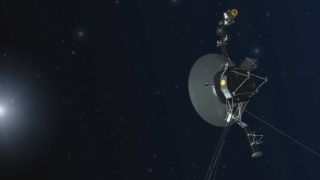
Voyager 2 as the backup
Jupiter and saturn flyby, uranus and neptune flyby, voyager 2's interstellar adventure, voyager 2's legacy, additional information.
Voyager 2, was the first of two twin probes NASA sent to investigate the outer planets of our solar system.
The probe was launched aboard a Titan IIIE-Centaur from Cape Canaveral Space Launch Complex 41 (previously Launch Complex 41) on Aug. 20, 1977, its twin spacecraft Voyager 1 was launched about two weeks later on Sept. 5. NASA planned for the Voyager spacecraft to take advantage of an alignment of the outer planets that takes place only every 176 years. The alignment would allow both probes to swing from one planet to the next, with a gravity boost to help them along the way.
While Voyager 1 focused on Jupiter and Saturn , Voyager 2 visited both those planets and also ventured to Uranus and Neptune. Voyager 2's mission to those last two planets would be humanity's only visit in the 20th century.
Related: Celebrate 45 years of Voyager with these amazing images of our solar system (gallery)
Voyager 2 is now traveling through interstellar space. As of early November 2018, NASA announced that Voyager 2 had crossed the outer edge of our solar system ( Voyager 1 crossed the boundary into interstellar space in 2012. ) Voyager 2 is now approximately 12 billion miles (19 billion kilometers) away from Earth and counting!
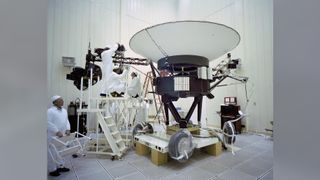
Although there was not enough money in Voyager 2's budget to guarantee it would still work when flying past Uranus and Neptune, its trajectory was designed to go past those planets anyway. If the spacecraft were still working after Saturn, NASA could try to take pictures of the other planets.
Voyager 2 was ready as a backup for Voyager 1. If Voyager 1 failed when taking pictures of Jupiter and Saturn, NASA was prepared to alter Voyager 2's path to follow Voyager 1's trajectory. It would cut off the Uranus and Neptune option, but still, preserve the possibility of capturing images.
The backup plan was never executed, though, because Voyager 1 went on to make many discoveries at Jupiter and Saturn, working well enough for NASA to carry out its original plans for Voyager 2.
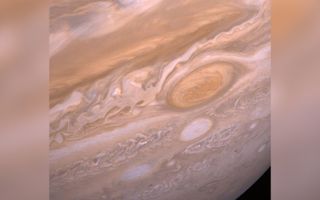
Voyager 2 reached Jupiter in 1979, two years after launching from Cape Canaveral. Since Voyager 1 had just gone through the system four months earlier, Voyager 2's arrival allowed NASA to take valuable comparison shots of Jupiter and its moons. It captured changes in the Great Red Spot and also resolved some of the moon's surfaces in greater detail.
Voyager 2 took pictures of many of Jupiter's satellites. Among its most spectacular findings were pictures from the icy moon Europa . Voyager 2 snapped detailed photos of the icy moon's cracks from 128,000 miles (205,996 km) away and revealed no change in elevation anywhere on the moon's surface.
Proving that moons are abundant around the outer planets, Voyager 2 happened to image Adrastea, a small moon of Jupiter, only months after Voyager 1 found two other Jupiter moons, Thebe and Metis. Adrastea is exceptionally small, only about 19 miles (30.5 kilometers) in diameter at the smallest estimate.
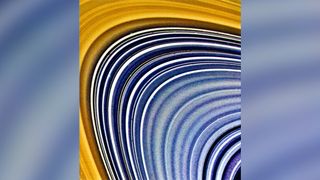
Next in line was Saturn. Voyager 2 became the third spacecraft to visit Saturn when it arrived at its closest point to the ringed planet on Aug. 26, 1981, and took hundreds of pictures of the planet, its moons and its rings . Suspecting that Saturn might be circled by many ringlets, scientists conducted an experiment. They watched the star Delta Scorpii for nearly two and a half hours as it passed through the plane of the rings. As expected, the star's flickering light revealed ringlets as small as 330 feet (100 meters) in diameter.
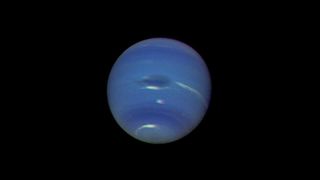
Voyager 2's made its closest approach to Uranus on Jan. 24, 1986, becoming the first spacecraft to visit the ice giant. The probe made several observations of the planet, noting that the south pole was facing the sun and that its atmosphere is about 85% hydrogen and 15% helium.
Additionally, Voyager 2 discovered rings around Uranus, 10 new moons and a magnetic field that, oddly, was 55 degrees off the planet's axis. Astronomers are still puzzling over Uranus' orientation today.
Voyager 2's pictures of the moon Miranda revealed it to be perhaps the strangest moon in the solar system. Its jumbled-up surface appears as though it was pushed together and broken apart several times.
The spacecraft then made it to Neptune , reaching the closest point on Aug. 25, 1989. It skimmed about 3,000 miles from the top of the planet's atmosphere and spotted five new moons as well as four rings around the planet. Remarkably, Voyager 2 is currently the only human-made object to have flown by the intriguing ice giant, according to NASA .
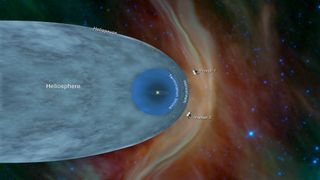
On November 5, 2018, Voyager 2 crossed the heliopause — the boundary between the heliosphere and interstellar space. At this stage, the probe was 119 astronomical units from the sun. (One AU is the average Earth-sun distance, which is about 93 million miles, or 150 million kilometers.) Voyager 1 made the crossing at nearly the same distance, 121.6 AU.
According to NASA Jet Propulsion Laboratory (JPL) , Voyager 2 has enough fuel to keep its instruments running until at least 2025. By then, the spacecraft will be approximately 11.4 billion miles (18.4 billion kilometers) away from the sun.
But Voyager 2 is destined to roam the Milky Way long after its instruments have stopped working.
In about 40,000 years Voyager 2 will pass 1.7 light-years (9.7 trillion miles) from the star Ross 248, according to NASA JPL. The cosmic vagabond will continue its journey through interstellar space and pass 4.3 light-years, (25 trillion miles) from Sirius in about 296,000 years.
Voyager 2's observations paved the way for later missions. The Cassini spacecraft, which was at Saturn between 2004 and 2017, tracked down evidence of liquid water at the planet's icy moons several decades after the Voyagers initially revealed the possible presence of water. Cassini also mapped the moon, Titan , after the Voyagers took pictures of its thick atmosphere.
Voyager 2's images of Uranus and Neptune also serve as a baseline for current observations of those giant planets. In 2014, astronomers were surprised to see giant storms on Uranus — a big change from when Voyager 2 flew by the planet in 1986.
To see where Voyager 2 is now you can check out the mission status with resources from NASA . Learn more about the iconic spacecraft with the National Air and Space Museum .
Bibliography
NASA. In depth: Voyager 2. NASA. Retrieved August 17, 2022, from www.solarsystem.nasa.gov/missions/voyager-2/in-depth/
NASA. Voyager - mission status. NASA. Retrieved August 17, 2022, from www.voyager.jpl.nasa.gov/mission/status/
NASA. Voyager - the interstellar mission. NASA. Retrieved August 17, 2022, from www. voyager.jpl.nasa.gov/mission/interstellar-mission
Join our Space Forums to keep talking space on the latest missions, night sky and more! And if you have a news tip, correction or comment, let us know at: [email protected].
Get the Space.com Newsletter
Breaking space news, the latest updates on rocket launches, skywatching events and more!
Elizabeth Howell (she/her), Ph.D., is a staff writer in the spaceflight channel since 2022 covering diversity, education and gaming as well. She was contributing writer for Space.com for 10 years before joining full-time. Elizabeth's reporting includes multiple exclusives with the White House and Office of the Vice-President of the United States, an exclusive conversation with aspiring space tourist (and NSYNC bassist) Lance Bass, speaking several times with the International Space Station, witnessing five human spaceflight launches on two continents, flying parabolic, working inside a spacesuit, and participating in a simulated Mars mission. Her latest book, " Why Am I Taller ?", is co-written with astronaut Dave Williams. Elizabeth holds a Ph.D. and M.Sc. in Space Studies from the University of North Dakota, a Bachelor of Journalism from Canada's Carleton University and a Bachelor of History from Canada's Athabasca University. Elizabeth is also a post-secondary instructor in communications and science at several institutions since 2015; her experience includes developing and teaching an astronomy course at Canada's Algonquin College (with Indigenous content as well) to more than 1,000 students since 2020. Elizabeth first got interested in space after watching the movie Apollo 13 in 1996, and still wants to be an astronaut someday. Mastodon: https://qoto.org/@howellspace
- Daisy Dobrijevic Reference Editor
Private astronauts of Polaris Dawn mission patiently await SpaceX launch amid multiple delays
Astronaut John McFall carries Paralympic flag at opening ceremony Aug. 28
Boeing's 1st crewed Starliner to return to Earth without astronauts on Sept. 6
Most Popular
- 2 New record: Blue Origin launches youngest woman beyond Kármán line
- 3 Private astronauts of Polaris Dawn mission patiently await SpaceX launch amid multiple delays
- 4 Netflix's 'Terminator Zero' restores faith in an ailing sci-fi franchise (review)
- 5 SETI searches for alien life in over 1,000 galaxies using unexplored radio frequencies

First to visit all four giant planets

Voyager 2 is the only spacecraft to visit Uranus and Neptune. The probe is now in interstellar space, the region outside the heliopause, or the bubble of energetic particles and magnetic fields from the Sun.
Mission Type
What is Voyager 2?
NASA's Voyager 2 is the second spacecraft to enter interstellar space. On Dec. 10, 2018, the spacecraft joined its twin – Voyager 1 – as the only human-made objects to enter the space between the stars.
- Voyager 2 is the only spacecraft to study all four of the solar system's giant planets at close range.
- Voyager 2 discovered a 14th moon at Jupiter.
- Voyager 2 was the first human-made object to fly past Uranus.
- At Uranus, Voyager 2 discovered 10 new moons and two new rings.
- Voyager 2 was the first human-made object to fly by Neptune.
- At Neptune, Voyager 2 discovered five moons, four rings, and a "Great Dark Spot."
In Depth: Voyager 2
The two-spacecraft Voyager missions were designed to replace original plans for a “Grand Tour” of the planets that would have used four highly complex spacecraft to explore the five outer planets during the late 1970s.
NASA canceled the plan in January 1972 largely due to anticipated costs (projected at $1 billion) and instead proposed to launch only two spacecraft in 1977 to Jupiter and Saturn. The two spacecraft were designed to explore the two gas giants in more detail than the two Pioneers (Pioneers 10 and 11) that preceded them.
In 1974, mission planners proposed a mission in which, if the first Voyager was successful, the second one could be redirected to Uranus and then Neptune using gravity assist maneuvers.
Each of the two spacecraft was equipped with a slow-scan color TV camera to take images of the planets and their moons and each also carried an extensive suite of instruments to record magnetic, atmospheric, lunar, and other data about the planetary systems.
The design of the two spacecraft was based on the older Mariners, and they were known as Mariner 11 and Mariner 12 until March 7, 1977, when NASA Administrator James C. Fletcher (1919-1991) announced that they would be renamed Voyager.
Power was provided by three plutonium oxide radioisotope thermoelectric generators (RTGs) mounted at the end of a boom.
Voyager 2 at Jupiter
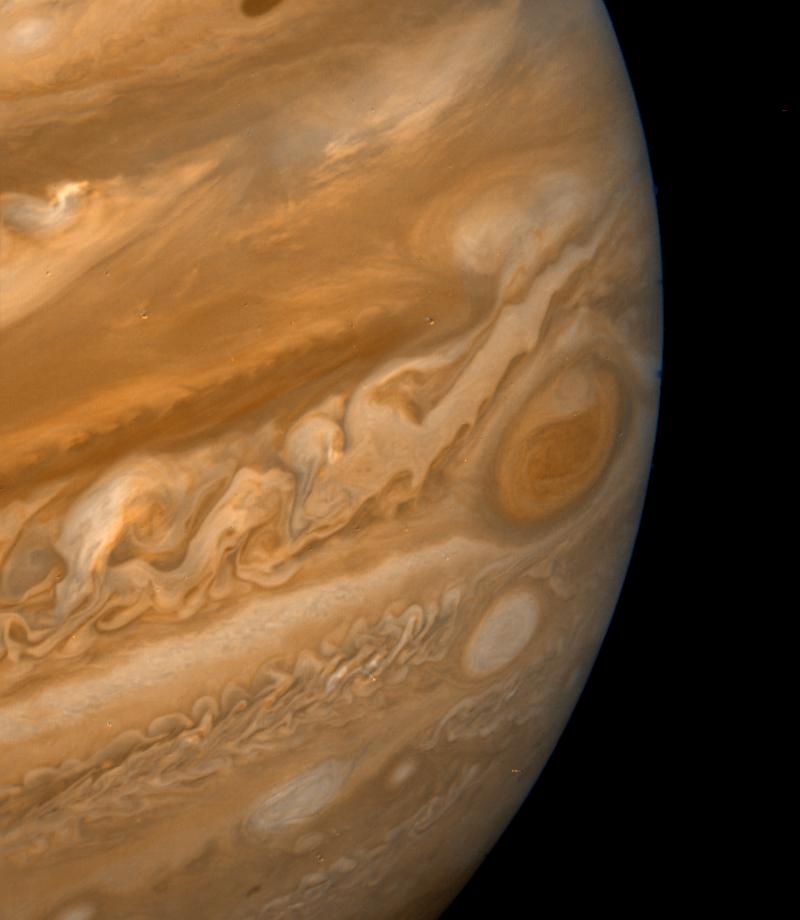
Voyager 2 began transmitting images of Jupiter April 24, 1979, for time-lapse movies of atmospheric circulation. Unlike Voyager 1, Voyager 2 made close passes to the Jovian moons on its way into the system, with scientists especially interested in more information from Europa and Io (which necessitated a 10 hour-long “volcano watch”).
During its encounter, it relayed back spectacular photos of the entire Jovian system, including its moons Callisto, Ganymede, Europa (at a range of about 127,830 miles or 205,720 kilometers, much closer than Voyager 1), Io, and Amalthea, all of which had already been surveyed by Voyager 1.
Voyager 2’s closest encounter to Jupiter was at 22:29 UT July 9, 1979, at a range of about 400,785 miles (645,000 kilometers). It transmitted new data on the planet’s clouds, its newly discovered four moons, and ring system, as well as 17,000 new pictures.
When the earlier Pioneers flew by Jupiter, they detected few atmospheric changes from one encounter to the second, but Voyager 2 detected many significant changes, including a drift in the Great Red Spot as well as changes in its shape and color.
With the combined cameras of the two Voyagers, at least 80% of the surfaces of Ganymede and Callisto were mapped out to a resolution of about 3 miles (5 kilometers).
Voyager 2 at Saturn
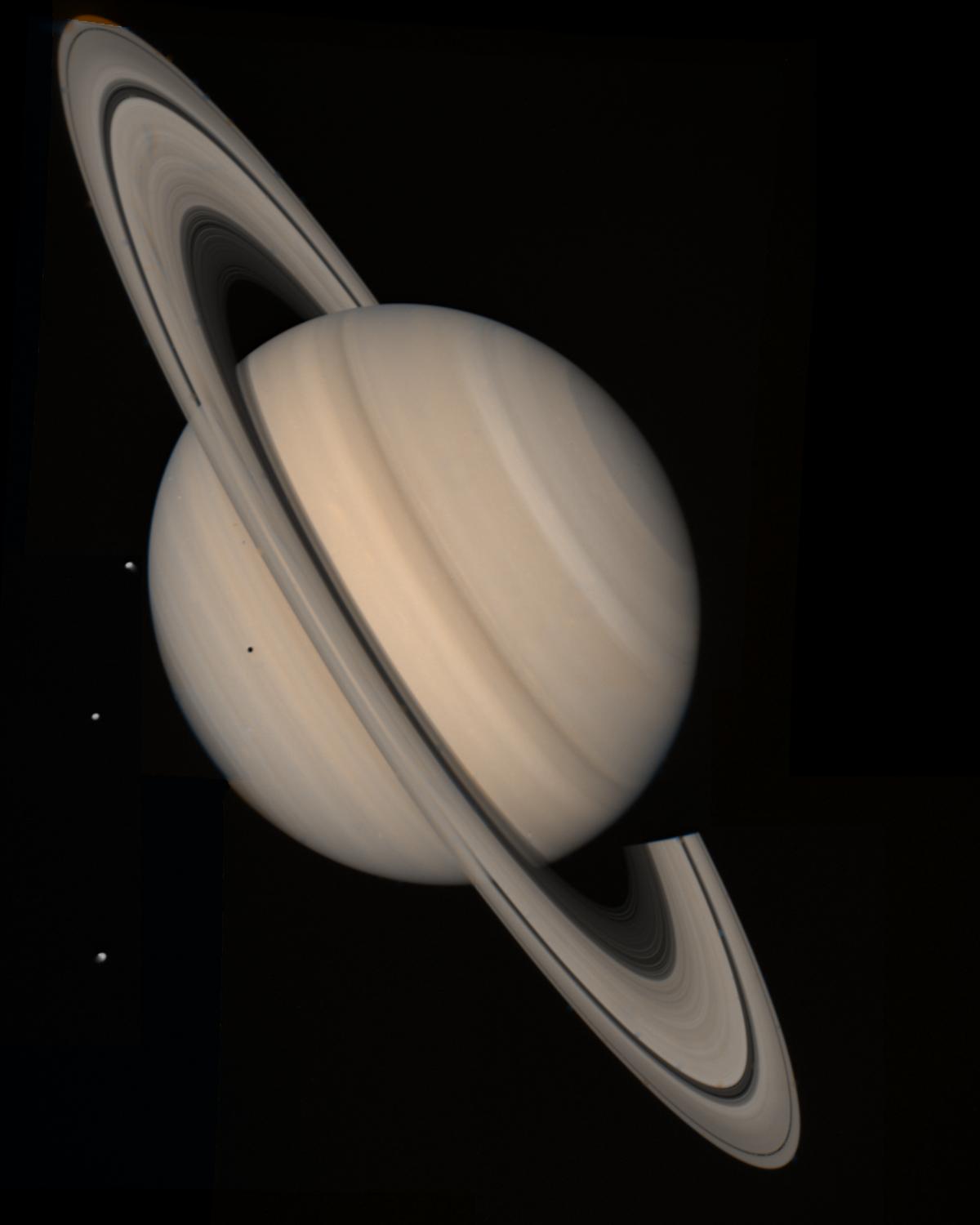
Following a course correction two hours after its closest approach to Jupiter, Voyager 2 sped to Saturn – its trajectory determined to a large degree by a decision made in January 1981, to try to send the spacecraft to Uranus and Neptune later in the decade.
Its encounter with the sixth planet began Aug. 22, 1981, two years after leaving the Jovian system, with imaging of the moon Iapetus. Once again, Voyager 2 repeated the photographic mission of its predecessor, although it actually flew about 14,290 miles (23,000 kilometers) closer to Saturn. The closest encounter to Saturn was at 01:21 UT Aug. 26, 1981, at a range of about 63,000 miles (101,000 kilometers).
The spacecraft provided more detailed images of the ring “spokes” and kinks, and also the F-ring and its shepherding moons, all found by Voyager 1. Voyager 2’s data suggested that Saturn’s A-ring was perhaps only about 980 feet (300 meters) thick.
As it flew behind and up past Saturn, the probe passed through the plane of Saturn’s rings at a speed of 8 miles per second (13 kilometers per second). For several minutes during this phase, the spacecraft was hit by thousands of micron-sized dust grains that created “puff” plasma as they were vaporized. Because the vehicle’s attitude was repeatedly shifted by the particles, attitude control jets automatically fired many times to stabilize the vehicle.
During the encounter, Voyager 2 also photographed the Saturn moons Hyperion (the “hamburger moon”), Enceladus, Tethys, and Phoebe, as well as the more recently discovered Helene, Telesto and Calypso.
Voyager 2 at Uranus
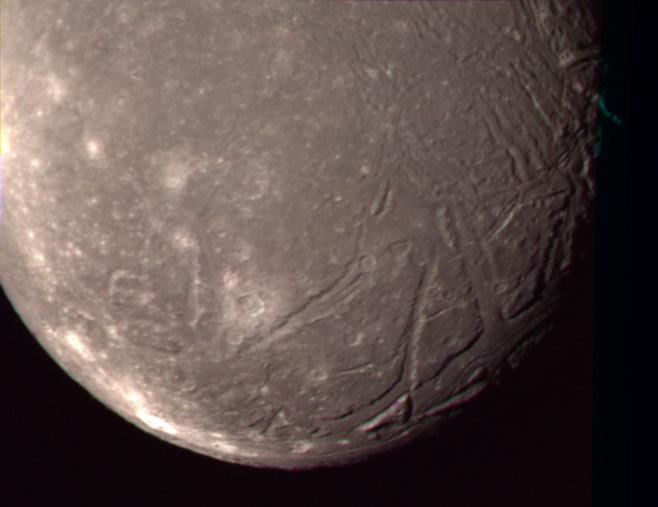
Although Voyager 2 had fulfilled its primary mission goals with the two planetary encounters, mission planners directed the veteran spacecraft to Uranus—a journey that would take about 4.5 years.
In fact, its encounter with Jupiter was optimized in part to ensure that future planetary flybys would be possible.
The Uranus encounter’s geometry was also defined by the possibility of a future encounter with Neptune: Voyager 2 had only 5.5 hours of close study during its flyby.
The first human-made object to fly past Uranus, Voyager 2's long-range observations of the planet began Nov. 4, 1985, when signals took approximately 2.5 hours to reach Earth. Light conditions were 400 times less than terrestrial conditions. Closest approach to Uranus took place at 17:59 UT Jan. 24, 1986, at a range of about 50,640 miles (81,500 kilometers).
During its flyby, Voyager 2 discovered 10 new moons (given such names as Puck, Portia, Juliet, Cressida, Rosalind, Belinda, Desdemona, Cordelia, Ophelia, and Bianca – obvious allusions to Shakespeare, continuing a naming tradition begun in 1787), two new rings in addition to the “older” nine rings, and a magnetic field tilted at 55 degrees off-axis and off-center.
The spacecraft found wind speeds in Uranus’ atmosphere as high as 450 miles per hour (724 kilometers per hour) and found evidence of a boiling ocean of water some 497 miles (800 kilometers) below the top cloud surface. Its rings were found to be extremely variable in thickness and opacity.
Voyager 2 also returned spectacular photos of Miranda, Oberon, Ariel, Umbriel, and Titania, five of Uranus’ larger moons. In flying by Miranda at a range of only 17,560 miles (28,260 kilometers), the spacecraft came closest to any object so far in its nearly decade-long travels. Images of the moon showed a strange object whose surface was a mishmash of peculiar features that seemed to have no rhyme or reason. Uranus itself appeared generally featureless.
The spectacular news of the Uranus encounter was interrupted the same week by the tragic Challenger accident that killed seven astronauts during their space shuttle launch Jan. 28, 1986.
Voyager 2 at Neptune
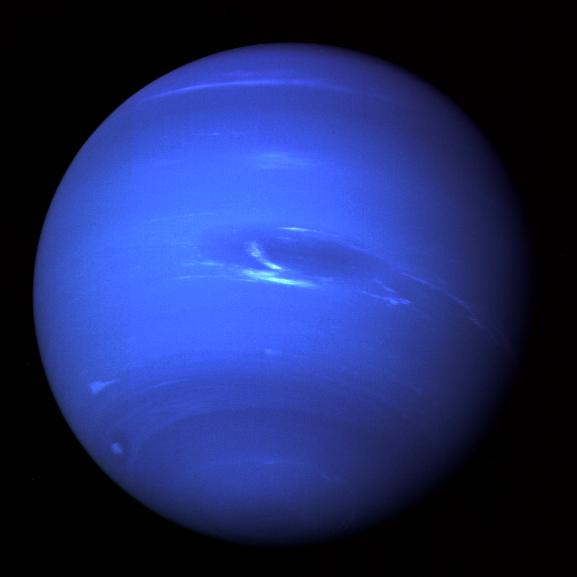
Following the Uranus encounter, the spacecraft performed a single midcourse correction Feb. 14, 1986 – the largest ever made by Voyager 2 – to set it on a precise course to Neptune.
Voyager 2’s encounter with Neptune capped a 4.3 billion-mile (7 billion-kilometer) journey when, on Aug. 25, 1989, at 03:56 UT, it flew about 2,980 miles (4,800 kilometers) over the cloud tops of the giant planet, the closest of its four flybys. It was the first human-made object to fly by the planet. Its 10 instruments were still in working order at the time.
During the encounter, the spacecraft discovered six new moons (Proteus, Larissa, Despina, Galatea, Thalassa, and Naiad) and four new rings.
The planet itself was found to be more active than previously believed, with 680-mile (1,100-kilometer) per hour winds. Hydrogen was found to be the most common atmospheric element, although the abundant methane gave the planet its blue appearance.
Images revealed details of the three major features in the planetary clouds – the Lesser Dark Spot, the Great Dark Spot, and Scooter.
Voyager photographed two-thirds of Neptune’s largest moon Triton, revealing the coldest known planetary body in the solar system and a nitrogen ice “volcano” on its surface. Spectacular images of its southern hemisphere showed a strange, pitted, cantaloupe-type terrain.
The flyby of Neptune concluded Voyager 2’s planetary encounters, which spanned an amazing 12 years in deep space, virtually accomplishing the originally planned “Grand Tour” of the solar system – at least in terms of targets reached, if not in science accomplished.
Voyager 2's Interstellar Mission
Once past the Neptune system, Voyager 2 followed a course below the ecliptic plane and out of the solar system. Approximately 35 million miles (56 million kilometers) past the encounter, Voyager 2’s instruments were put in low-power mode to conserve energy.
After the Neptune encounter, NASA formally renamed the entire project the Voyager Interstellar Mission (VIM).
Of the four spacecraft sent out to beyond the environs of the solar system in the 1970s, three of them – Voyagers 1 and 2 and Pioneer 11 – were all heading in the direction of the solar apex, i.e., the apparent direction of the Sun’s travel in the Milky Way galaxy, and thus would be expected to reach the heliopause earlier than Pioneer 10, which was headed in the direction of the heliospheric tail.
In November 1998, 21 years after launch, nonessential instruments were permanently turned off, leaving seven instruments still operating.
At 9.6 miles per second (15.4 kilometers per second) relative to the Sun, it will take about 19,390 years for Voyager 2 to traverse a single light year.

Asif Siddiqi
Beyond Earth: A Chronicle of Deep Space Exploration
Through the turn of the century, NASA's Jet Propulsion Laboratory (JPL) continued to receive ultraviolet and particle fields data. For example, on Jan. 12, 2001, an immense shock wave that had blasted out of the outer heliosphere on July 14, 2000, finally reached Voyager 2. During its six-month journey, the shock wave had plowed through the solar wind, sweeping up and accelerating charged particles. The spacecraft provided important information on high-energy shock-energized ions.
On Aug. 30, 2007, Voyager 2 passed the termination shock and then entered the heliosheath. By Nov. 5, 2017, the spacecraft was 116.167 AU (about 10.8 billion miles or about 17.378 billion kilometers) from Earth, moving at a velocity of 9.6 miles per second (15.4 kilometers per second) relative to the Sun, heading in the direction of the constellation Telescopium. At this velocity, it would take about 19,390 years to traverse a single light-year.
On July 8, 2019, Voyager 2 successfully fired up its trajectory correction maneuver thrusters and will be using them to control the pointing of the spacecraft for the foreseeable future. Voyager 2 last used those thrusters during its encounter with Neptune in 1989.
The spacecraft's aging attitude control thrusters have been experiencing degradation that required them to fire an increasing and untenable number of pulses to keep the spacecraft's antenna pointed at Earth. Voyager 1 had switched to its trajectory correction maneuver thrusters for the same reason in January 2018.
To ensure that both vintage robots continue to return the best scientific data possible from the frontiers of space, mission engineers are implementing a new plan to manage them. The plan involves making difficult choices, particularly about instruments and thrusters.

National Space Science Data Center: Voyager 2
A library of technical details and historic perspective.

A comprehensive history of missions sent to explore beyond Earth.
Discover More Topics From NASA


IMAGES
VIDEO
COMMENTS
Learn how the Voyager probes use three computer systems to explore the solar system since 1977. The CCS, FDS, and AACS work together to manage commands, data, and orientation of the spacecraft.
The view looks good from the top. The Voyager II Elite is an uncompromising enthusiast powerhouse gaming PC. Gaming. 4K video editing. Content creation. The power of the entire universe: At your fingertips.The Voyager II Elite comes with the Planetary Platelight panel (shown).
Why NASA Needs a Programmer Fluent In 60-Year-Old Languages To keep the Voyager 1 and 2 crafts going, NASA's new hire has to know FORTRAN and assembly languages.
Voyager 2 is a space probe launched by NASA on August 20, 1977, as a part of the Voyager program. It was launched on a trajectory towards the gas giants Jupiter and Saturn and enabled further encounters with the ice giants Uranus and Neptune. It remains the only spacecraft to have visited either of the ice giant planets, and was the third of five spacecraft to achieve Solar escape velocity ...
The Voyager program is an American scientific program that employs two interstellar probes, Voyager 1 and Voyager 2. They were launched in 1977 to take advantage of a favorable alignment of the two gas giants Jupiter and Saturn and the ice giants, Uranus and Neptune, to fly near them while collecting data for transmission back to Earth.
Engineers expect to begin turning off fields and particles science instruments one by one, starting in 2020 for Voyager 2. Voyager 2 will have to start turning science instruments off sooner because it is currently operating one more instrument than Voyager 1. Engineers expect each spacecraft to continue operating at least one science ...
Revisiting Decades-Old Voyager 2 Data, Scientists Find One More Secret Eight and a half years into its grand tour of the solar system, NASA's Voyager 2 spacecraft was ready for another encounter. It was Jan. 24, 1986, and soon it would meet the mysterious seventh planet, icy-cold Uranus.
14th Gen is here! Benchmarking the Voyager II Starforge Systems 66.9K subscribers Subscribed 69 2.6K views 8 months ago #Jschlatt #mizkif #moistcr1tikal
Over the weekend, ground controllers at JPL planned to uplink a software patch to Voyager 2. It's a test before the ground team sends the same patch to Voyager 1 to resolve a problem with one of ...
Uptime 15,364 days - The Computers of Voyager The Voyager 1 and Voyager 2 space probes, both launched in 1977, each had a primary objective to explore Jupiter and Saturn.
The CCS, AACS, and FDS constitute a sophisticated, distributed, dual-redundant, embedded computer system that JPL designed and built into the Voyager spacecraft. It was the instruments on the spacecraft that lacked computers and software. This is one of the odd ways that the US builds uncrewed spacecraft for scientific missions.
The thrusters on Voyager 1 and Voyager 2 are primarily used to keep the spacecraft antennas pointed at Earth in order to communicate. Spacecraft can rotate in three directions - up and down, to the left and right, and around the central axis, like a wheel. As they do this, the thrusters automatically fire and reorient the spacecraft to keep ...
Where Are They Now? Both Voyager 1 and Voyager 2 have reached "interstellar space" and each continue their unique journey deeper into the cosmos. In NASA's Eyes on the Solar System app, you can see the actual spacecraft trajectories of the Voyagers updated every five minutes.
For the user looking to venture beyond gaming. The Voyager II is built to use components on the cutting edge of computers. Built to be as bold as beautiful, this gaming PC serves as the standard for high-end PCs. The Voyager II comes with the Planetary Platelight panel (shown).
The identical Voyager spacecraft are three-axis stabilized systems that use celestial or gyro referenced attitude control to maintain pointing of the high-gain antennas toward Earth. The prime mission science payload consisted of 10 instruments (11 investigations including radio science).
Engineers successfully reset a computer onboard Voyager 2 that caused an unexpected data pattern shift, and the spacecraft resumed sending properly formatted science data back to Earth on Sunday, May 23
THE BEST PC IN THE UNIVERSE? VOYAGER II ELITE BENCHMARK Starforge Systems 69.3K subscribers Subscribed 130 7.2K views 9 months ago #mizkif #Jschlatt #moistcr1tikal
Forty-five years ago, the Voyager 2 spacecraft left Earth to begin an epic journey that continues to this day. The first of a pair of spacecraft, Voyager 2 lifted off on Aug. 20, 1977. NASA's Jet Propulsion Laboratory in Southern California manages the spacecraft on their missions to explore the outer planets and beyond.
NASA's Voyager 1 spacecraft has gone interstellar. Launched in 1977, the probe is vintage space hardware. At more than 36 years old, or roughly a millennium in computer years, it's an impressive ...
Article. Forty-five years ago, the Voyager 2 spacecraft left Earth to begin an epic journey that continues to this day. The first of a pair of spacecraft, Voyager 2 lifted off on Aug. 20, 1977. NASA's Jet Propulsion Laboratory (JPL) in Pasadena, California, manages the spacecraft on their missions to explore the outer planets and beyond.
NASA engineers have fully revived the far-flung Voyager 2 probe on the edge of the solar system after fixing a computer glitch that scrambled its messages home for nearly three weeks.
Voyager 2 was the first of twin probes sent to explore our solar system. After reaching interstellar space in 2014 the probe continues to explore the cosmos.
Nov 2, 2022. View all "The Hash" on CDTV Clips View all. Former Co-Host Drops by 'The Hash' Aug 31, 2023. Best of 'The Hash' Aug 31, 2023. Hong Kong Grants Crypto Bank Seba In-Principle Approval.
Rockets aren't the only thing we launch. Welcome to our improved NASA website! If you don't find what you are looking for, please try searching above, give us feedback , or return to the main site . NASA explores the unknown in air and space, innovates for the benefit of humanity, and inspires the world through discovery.